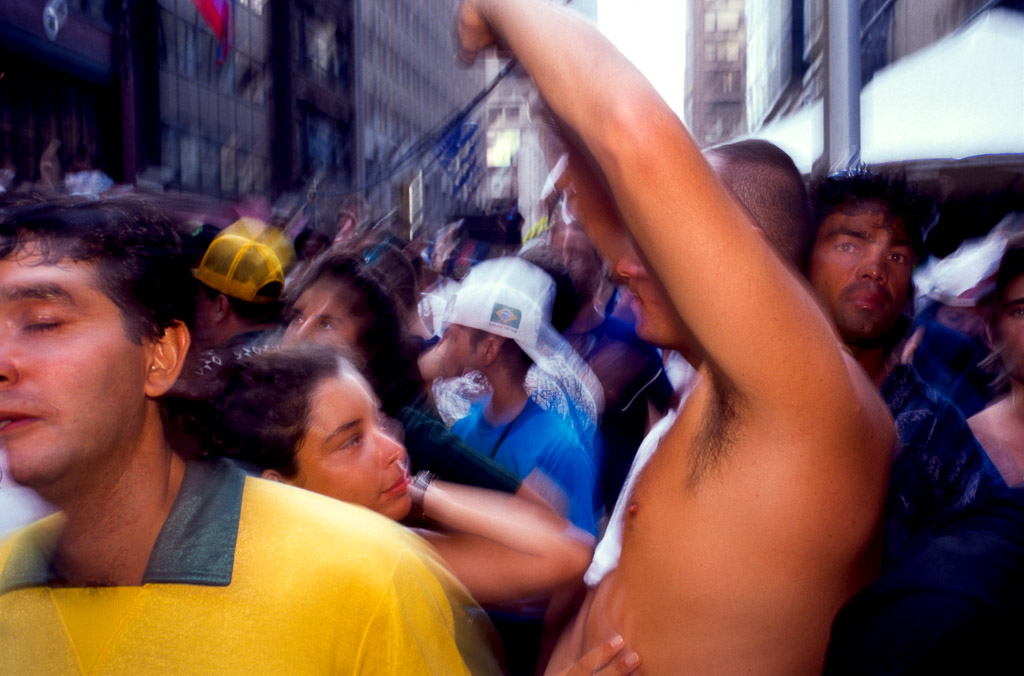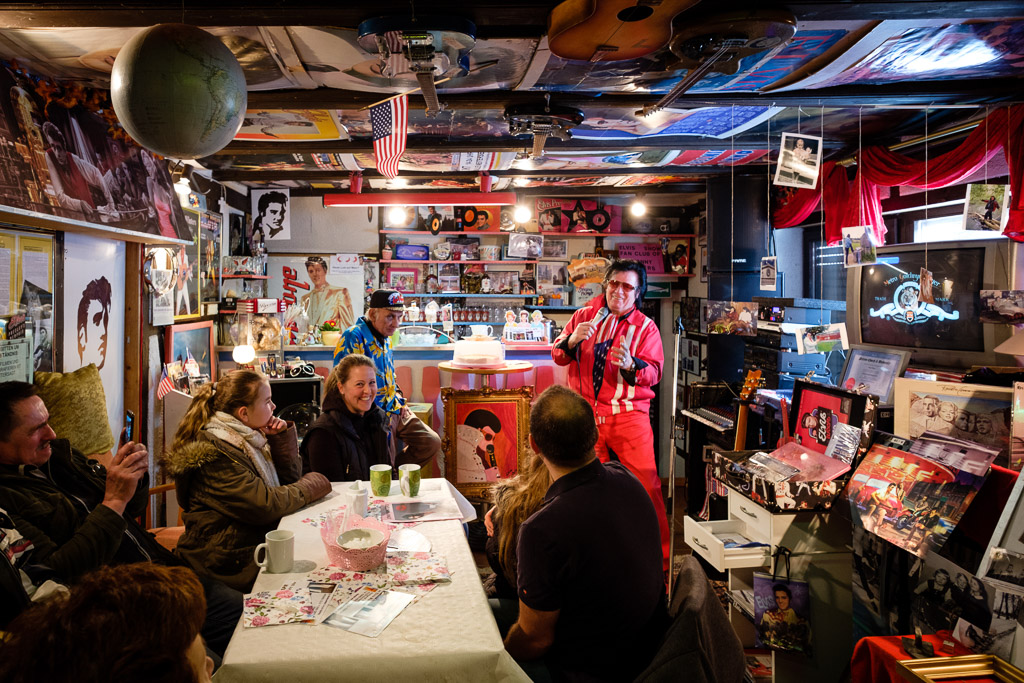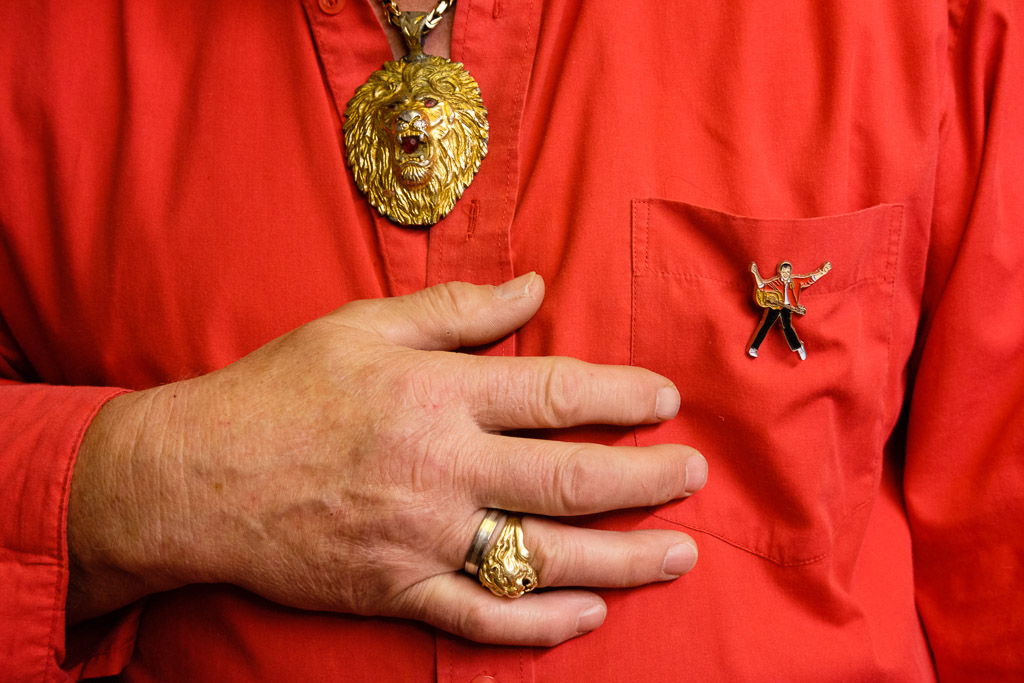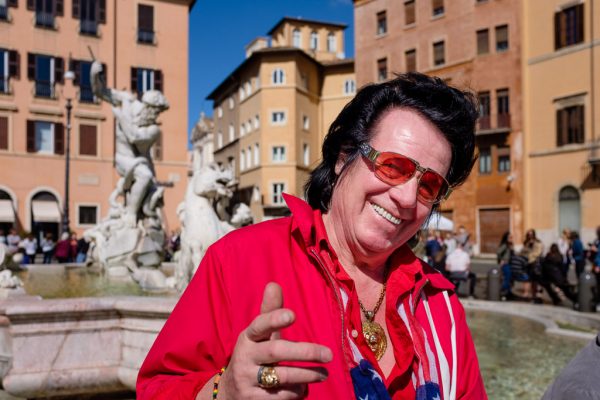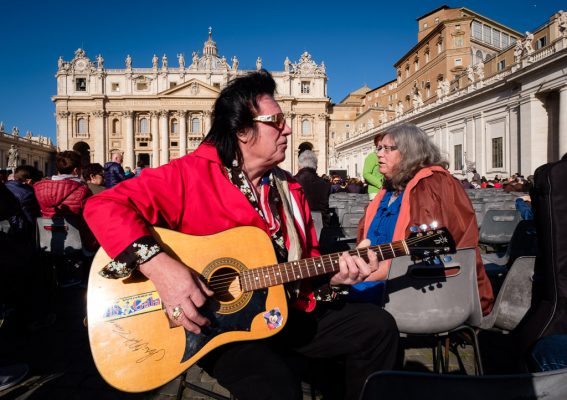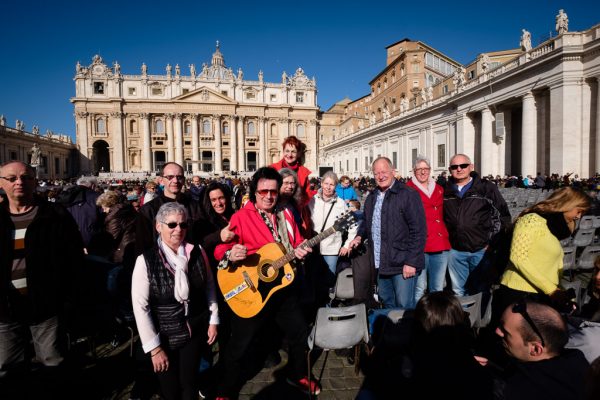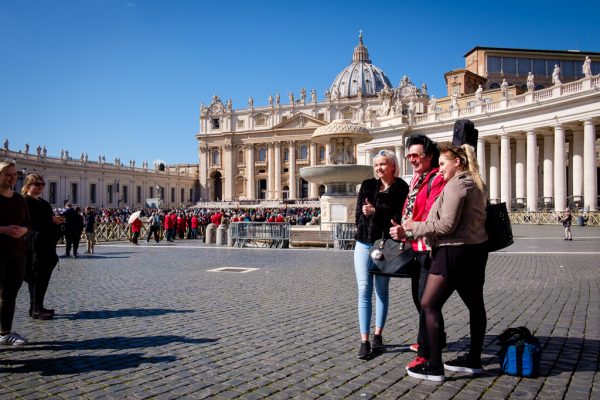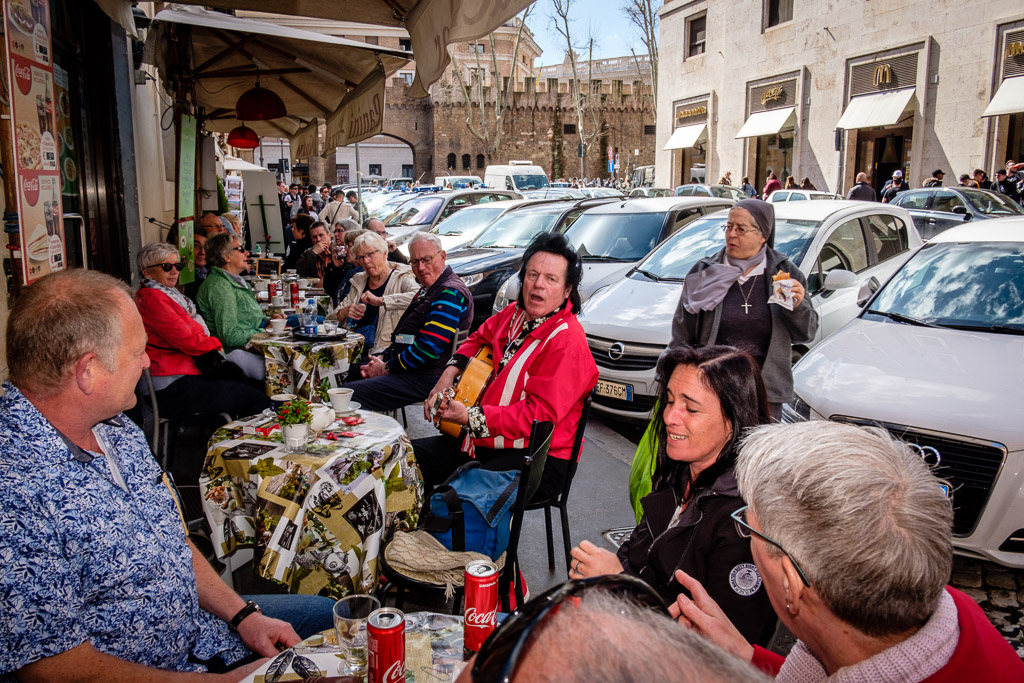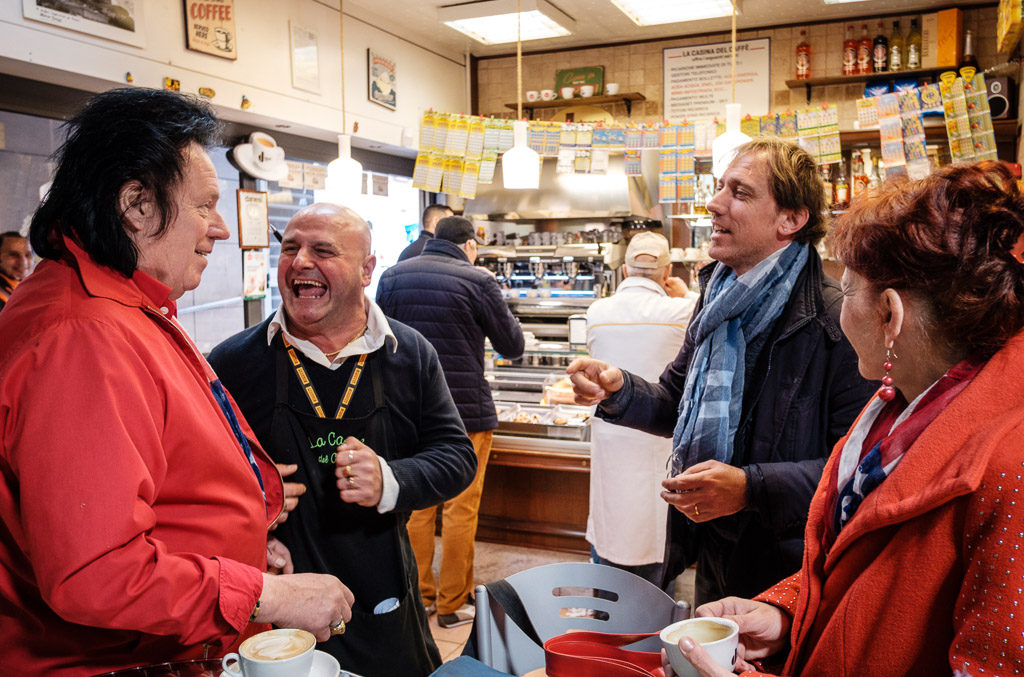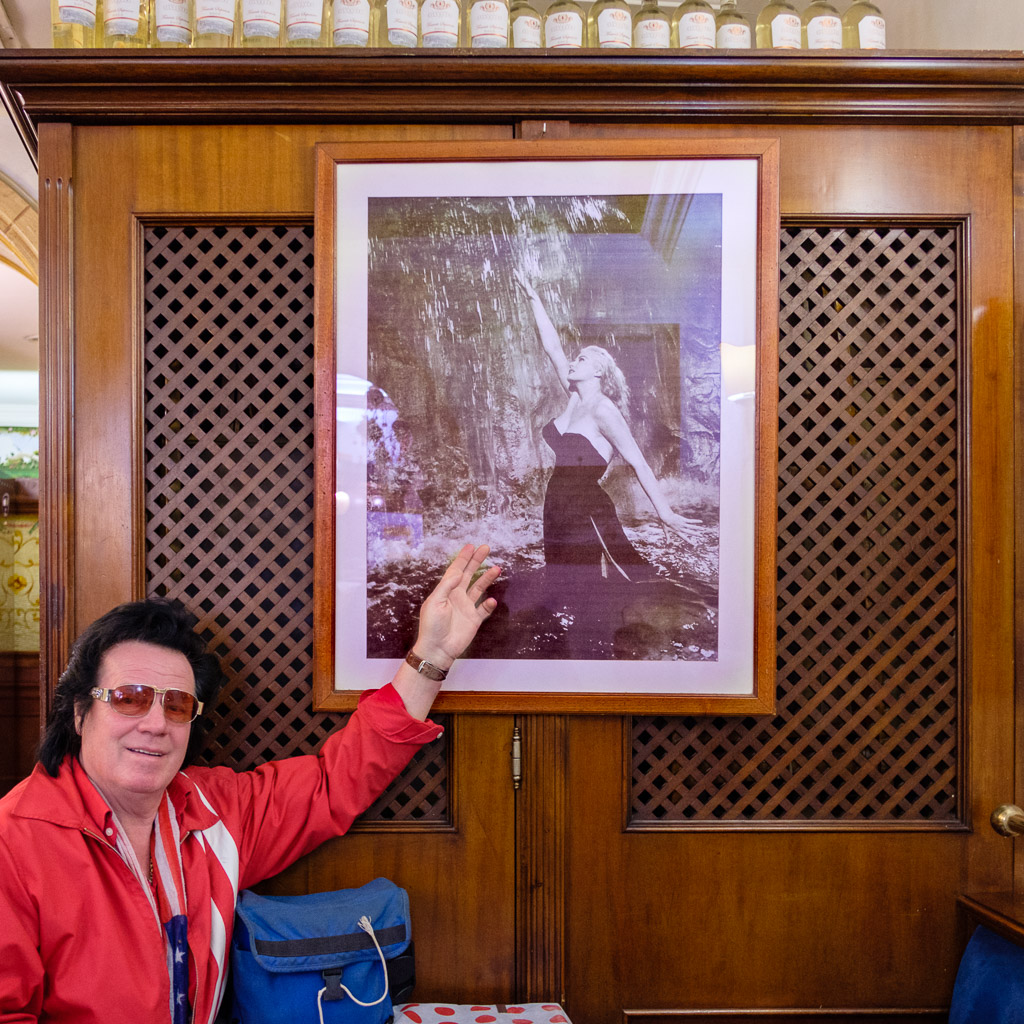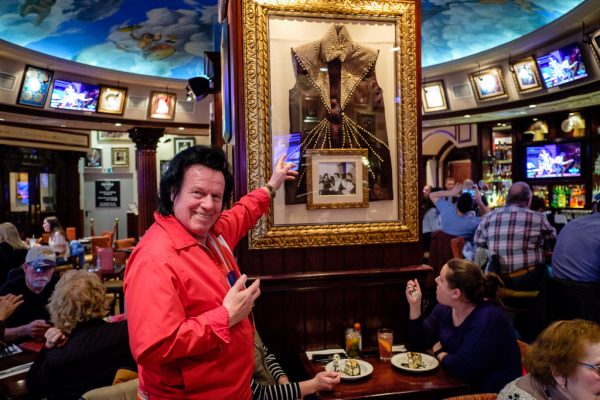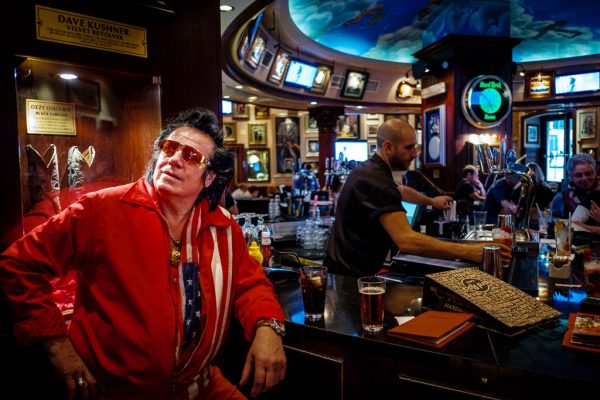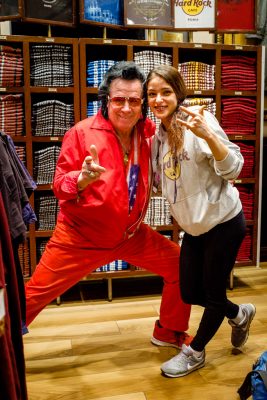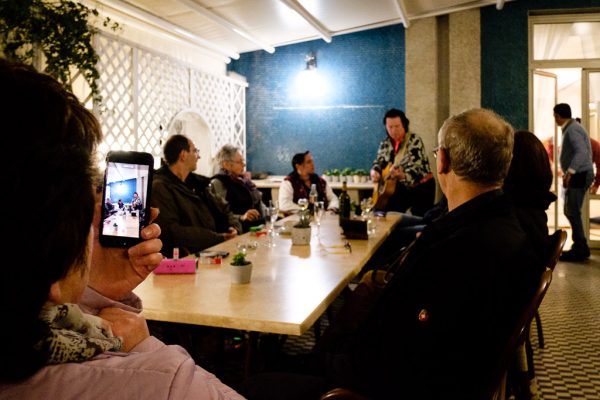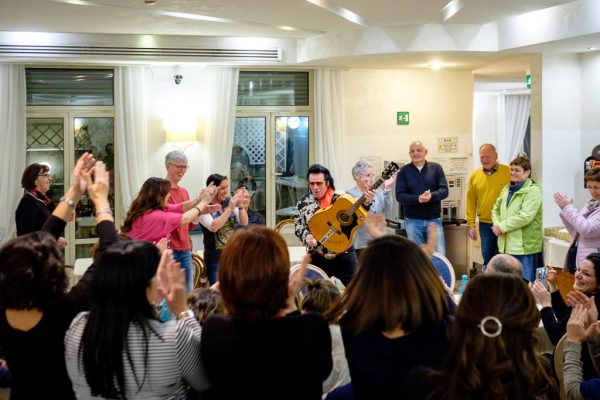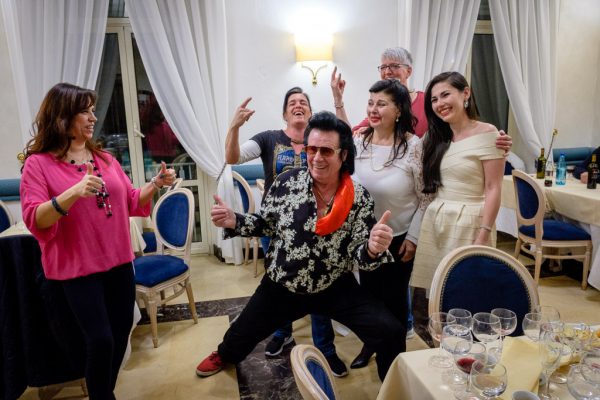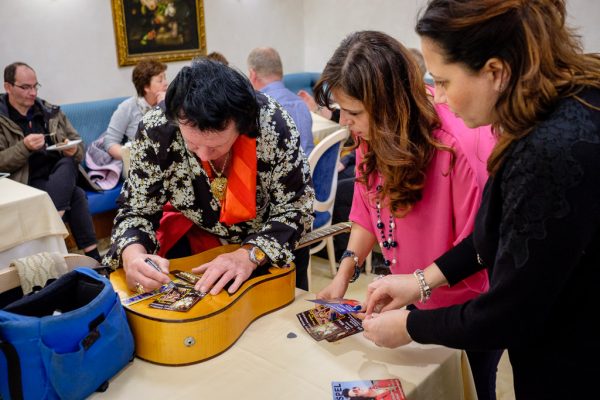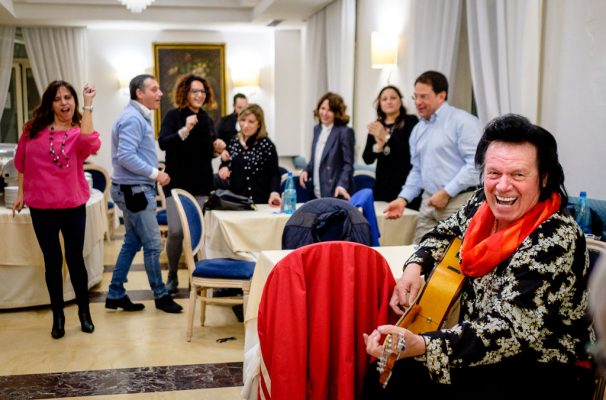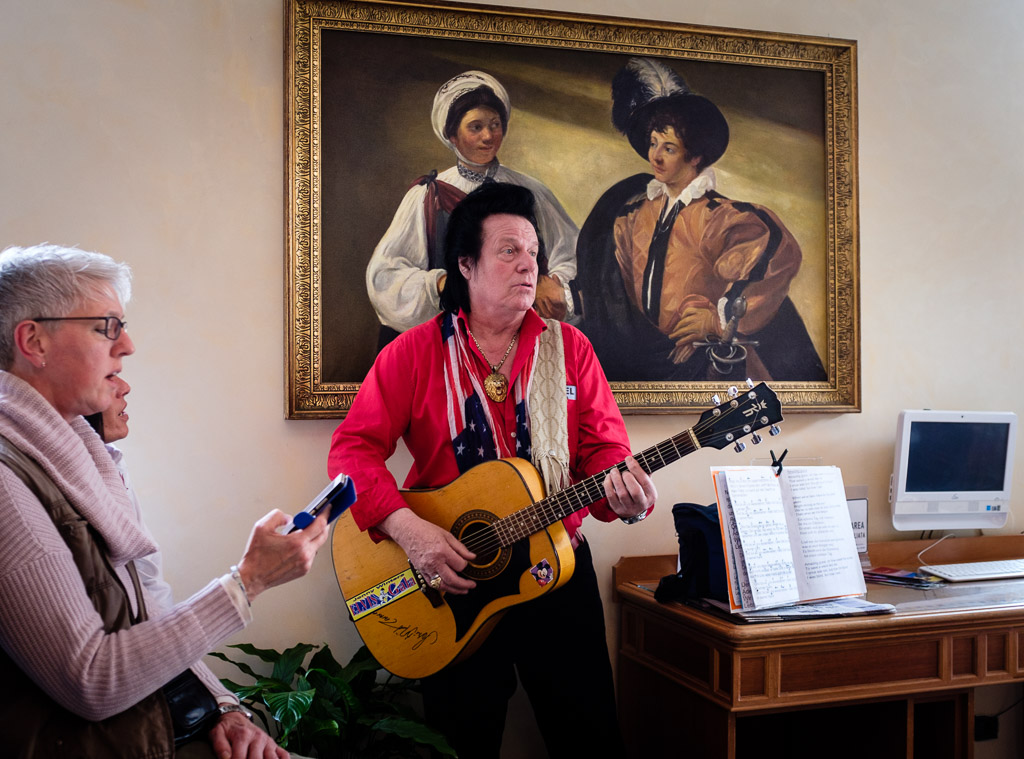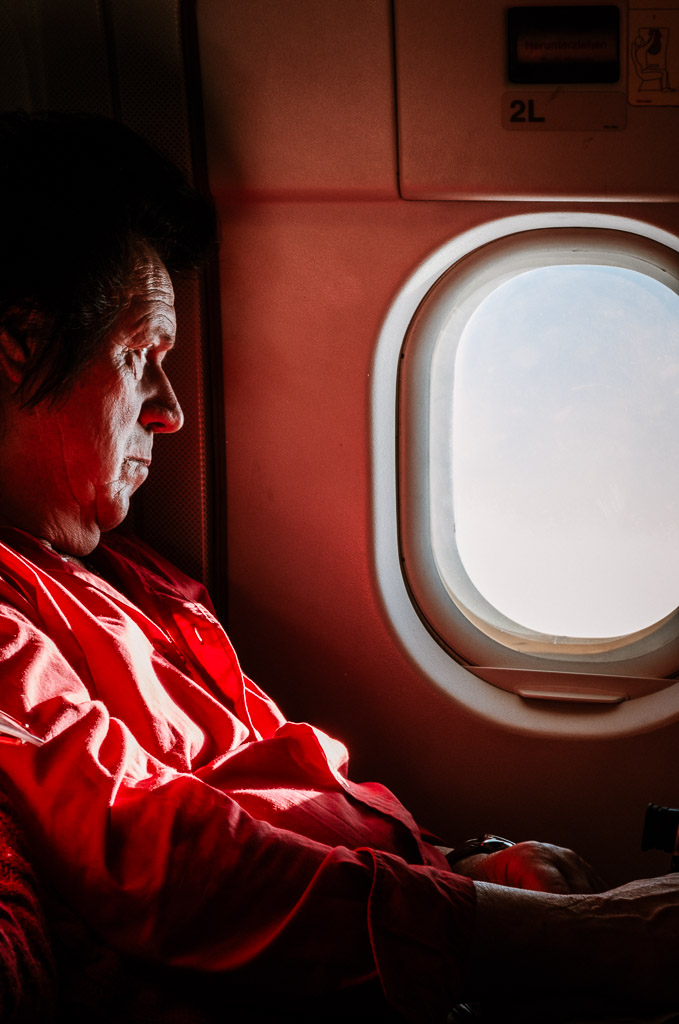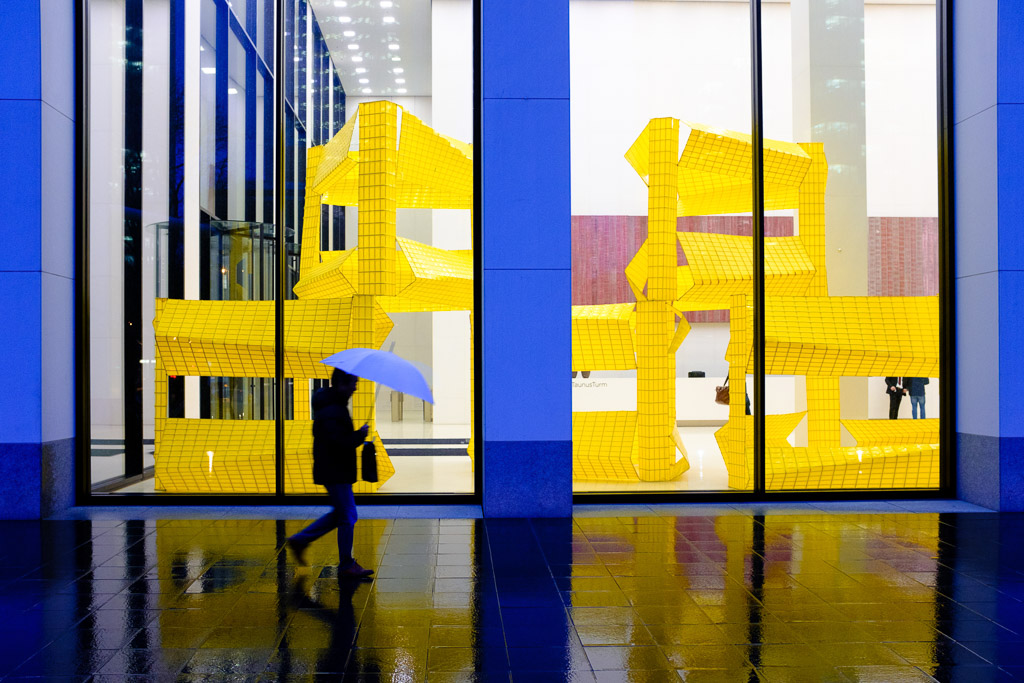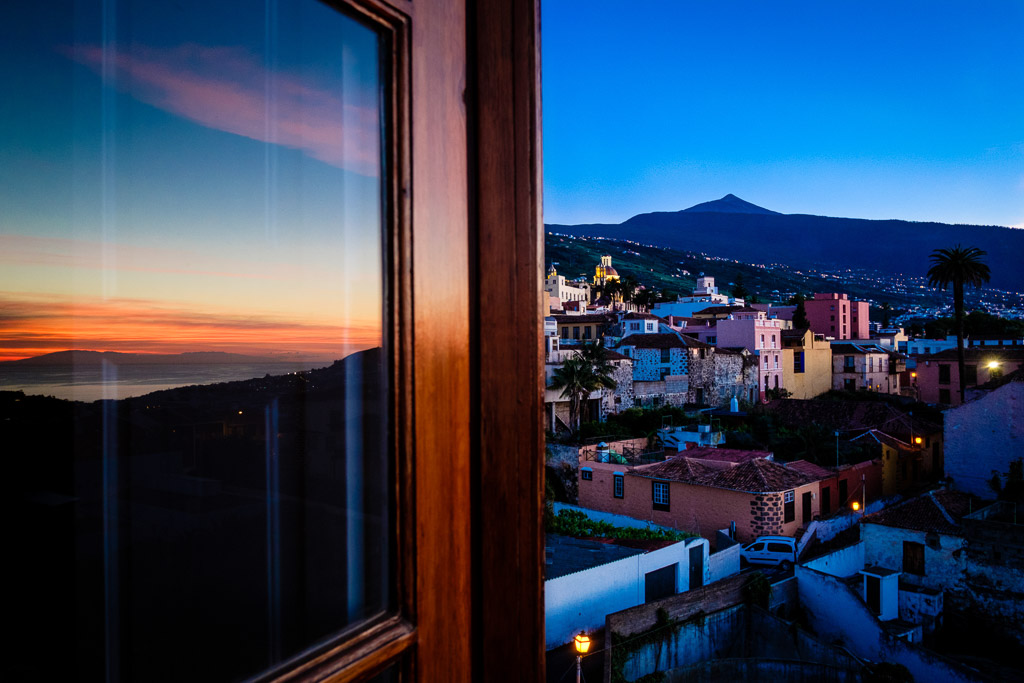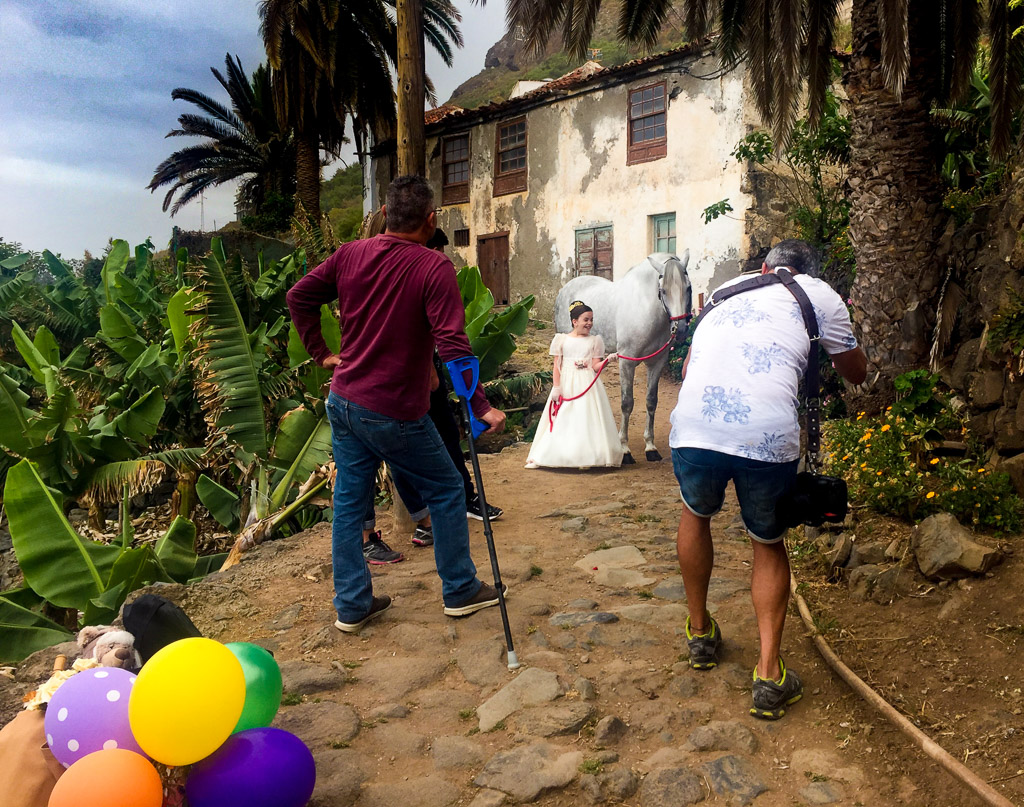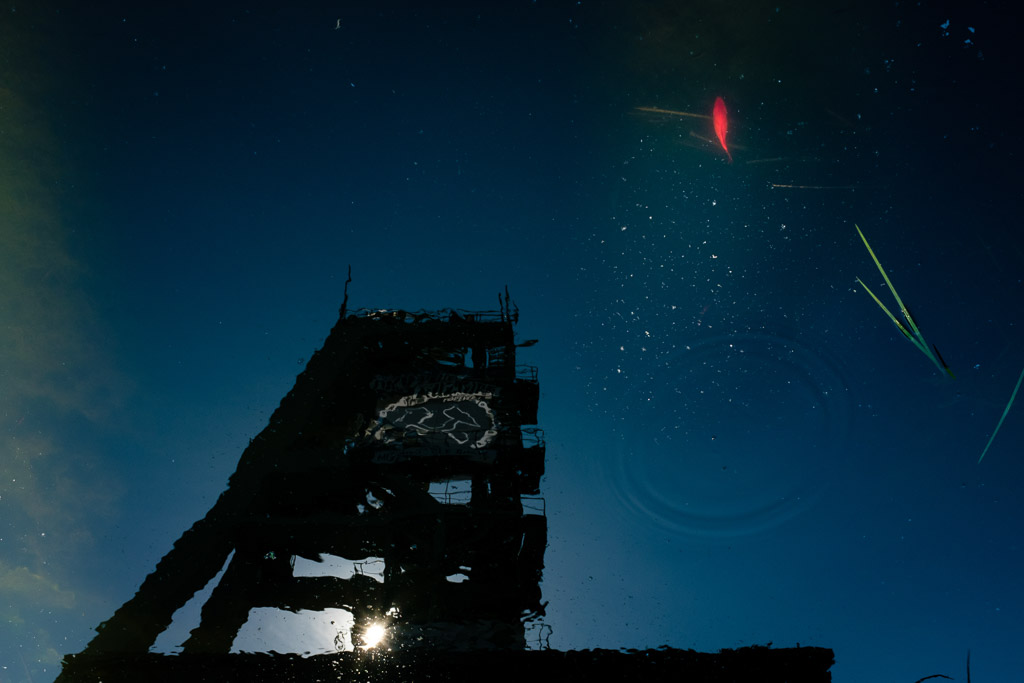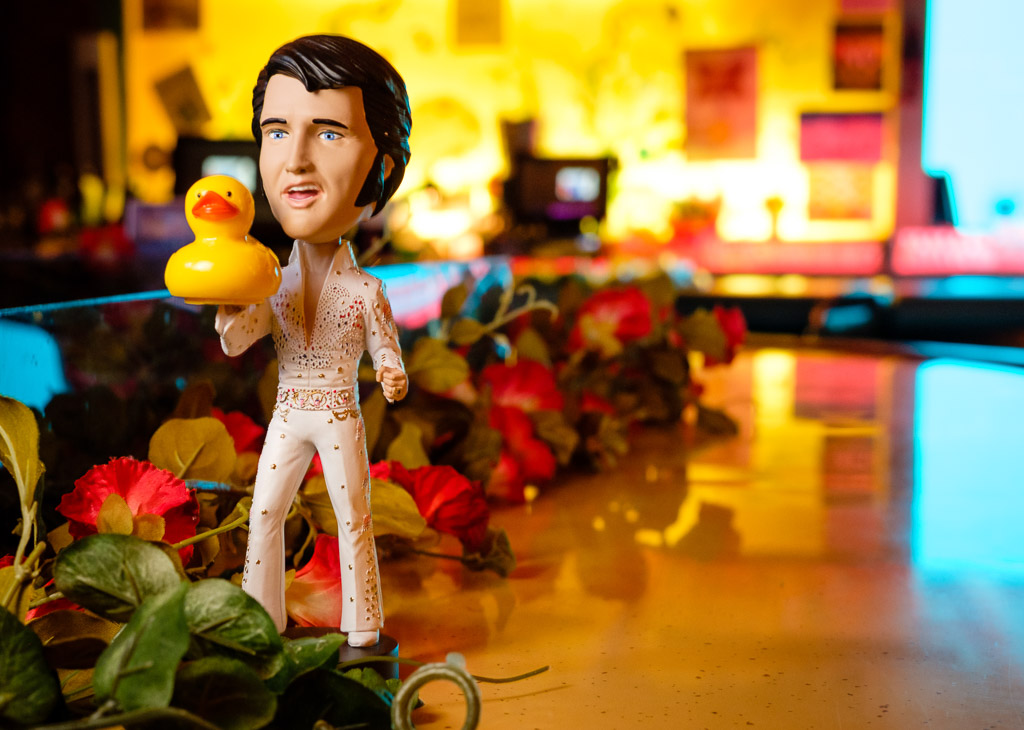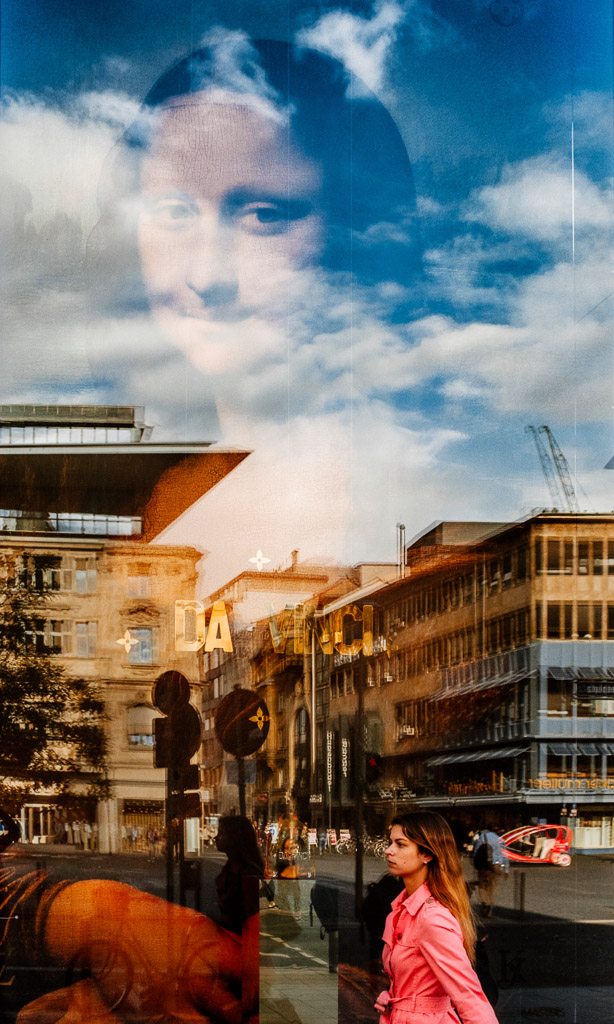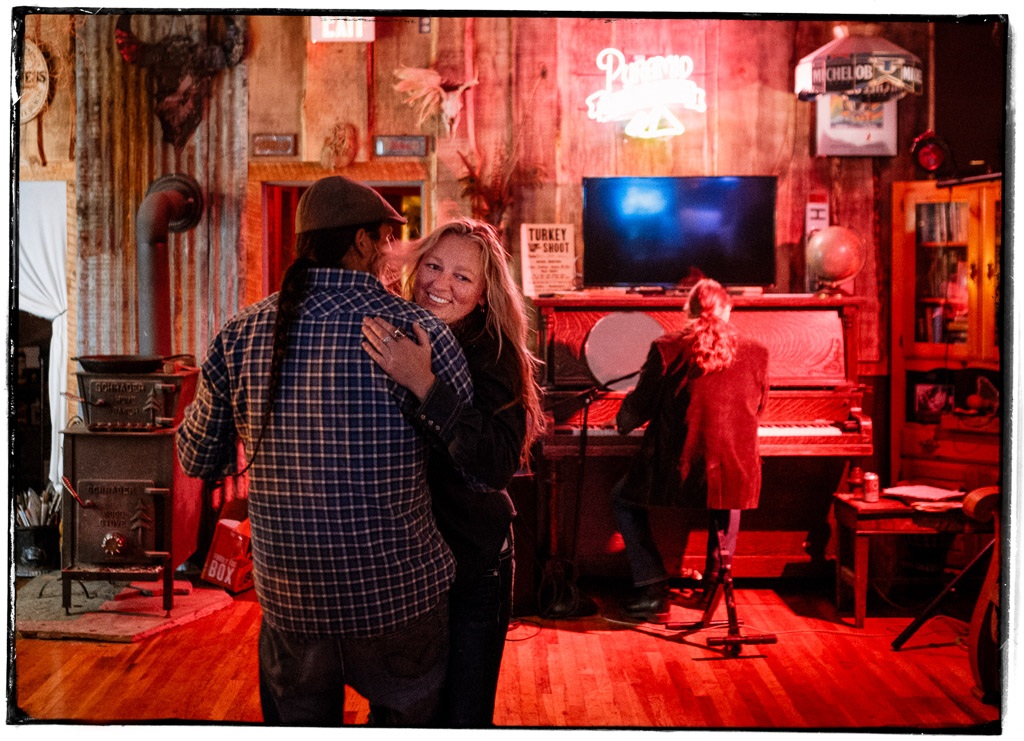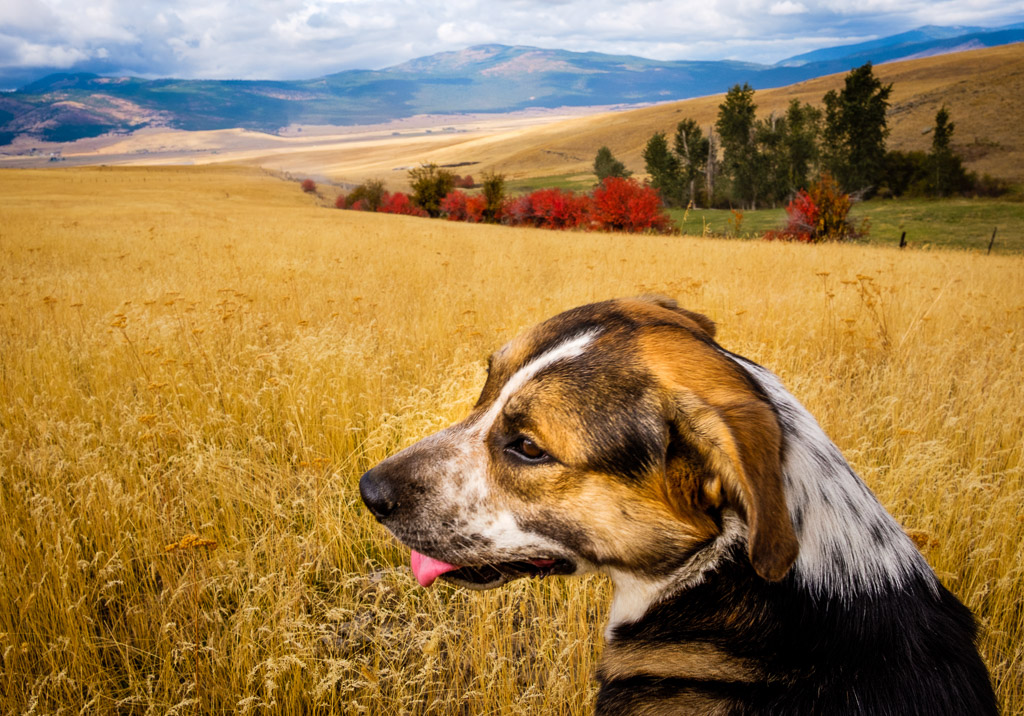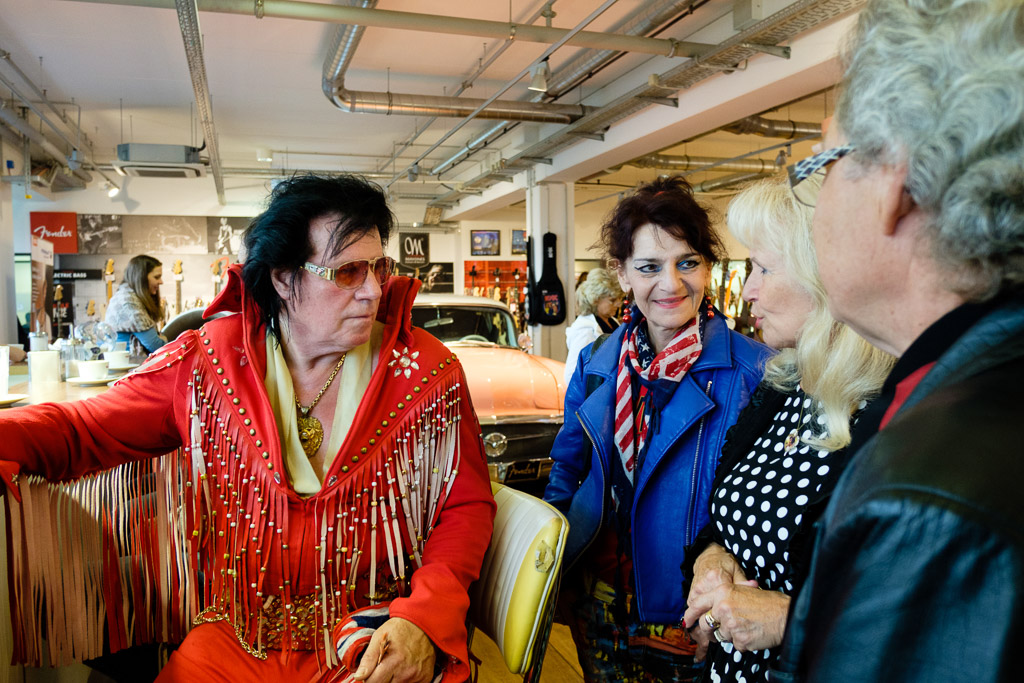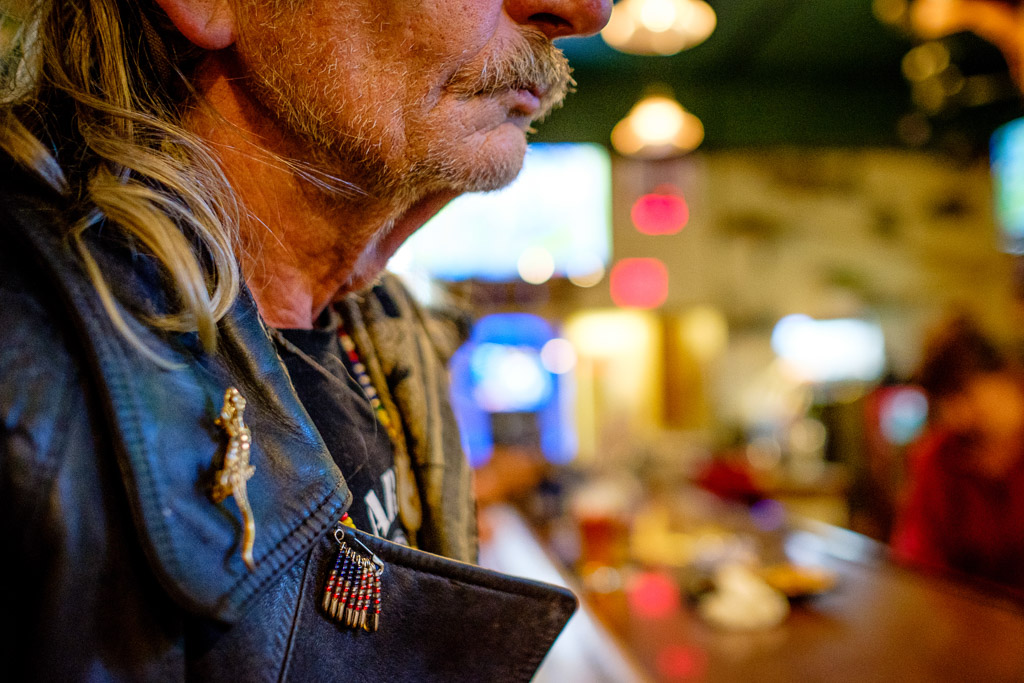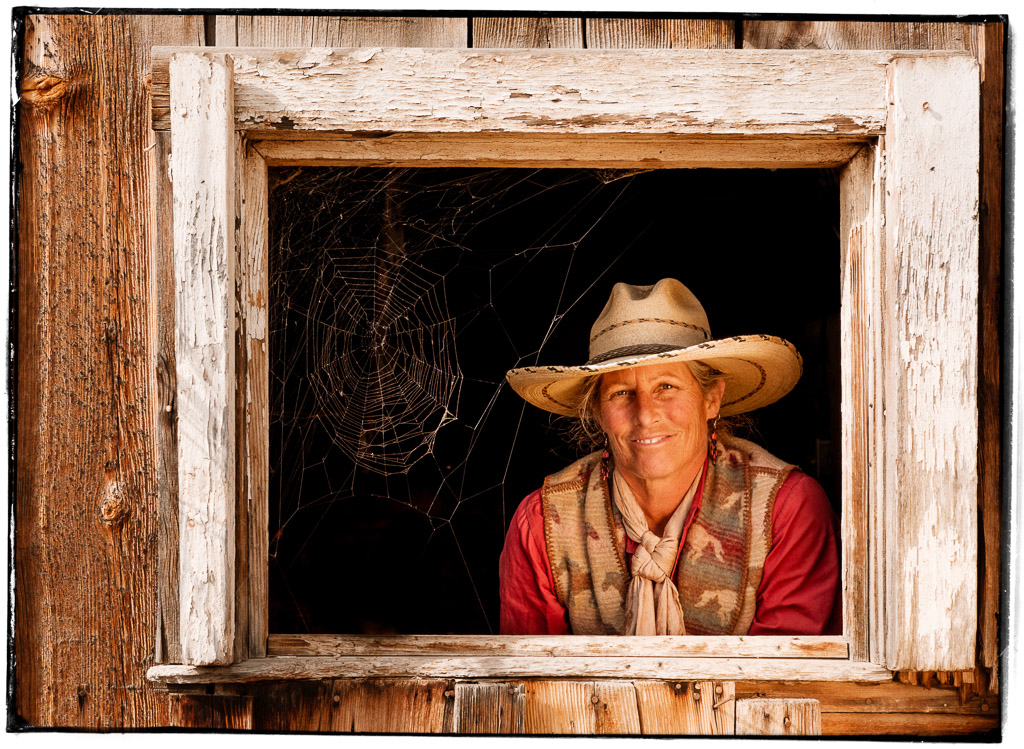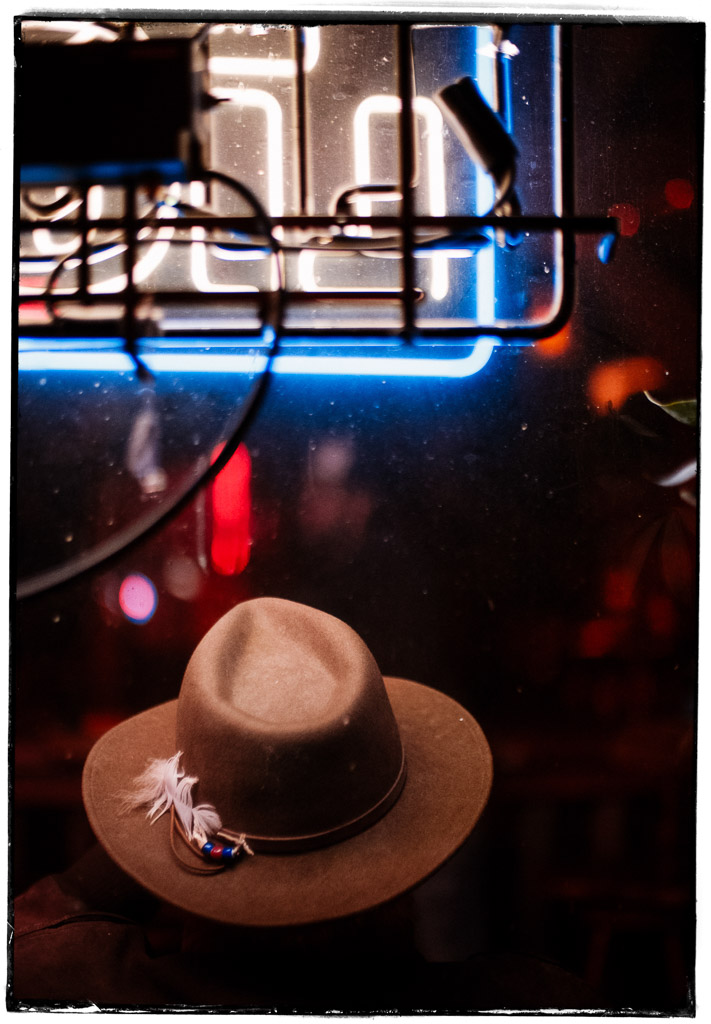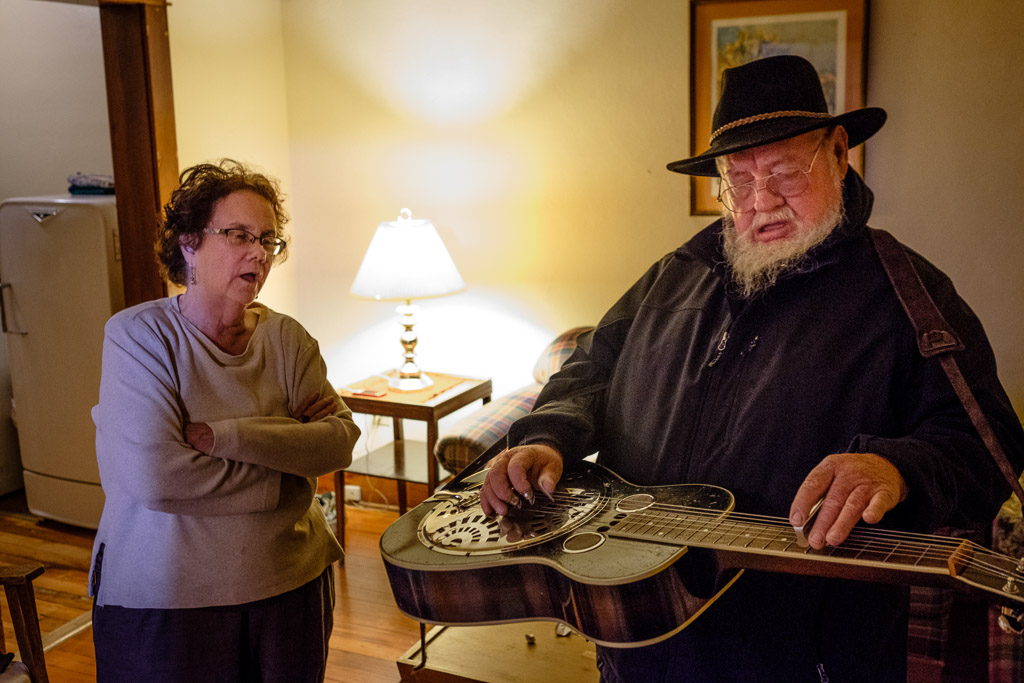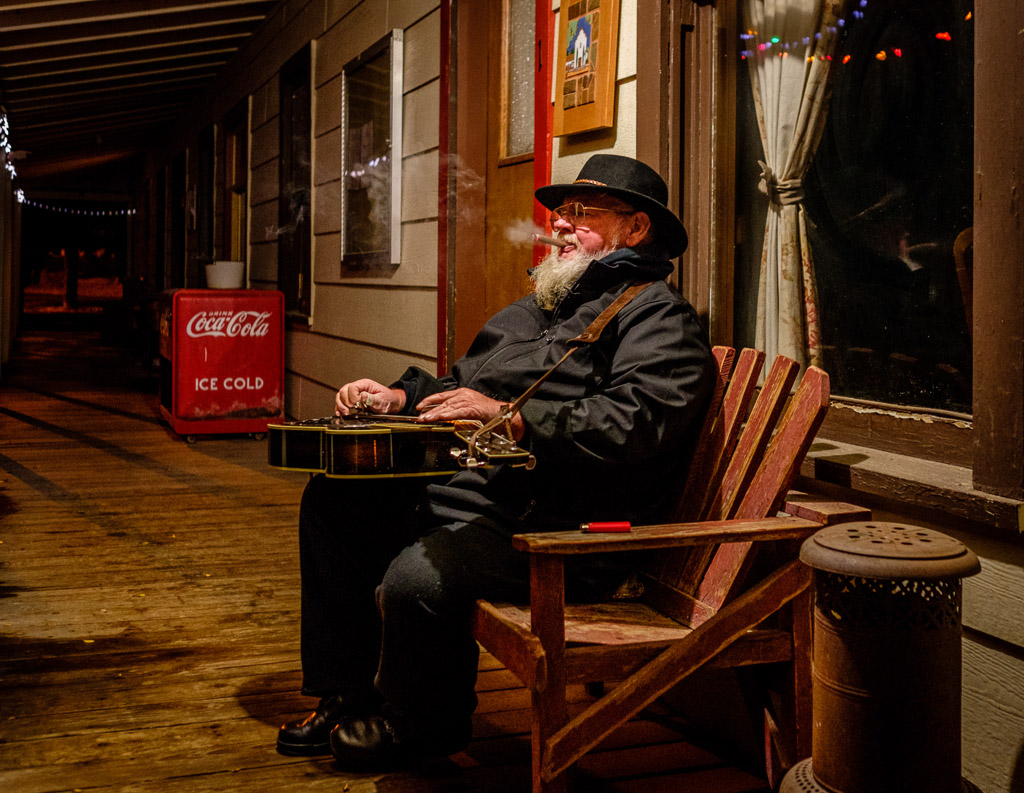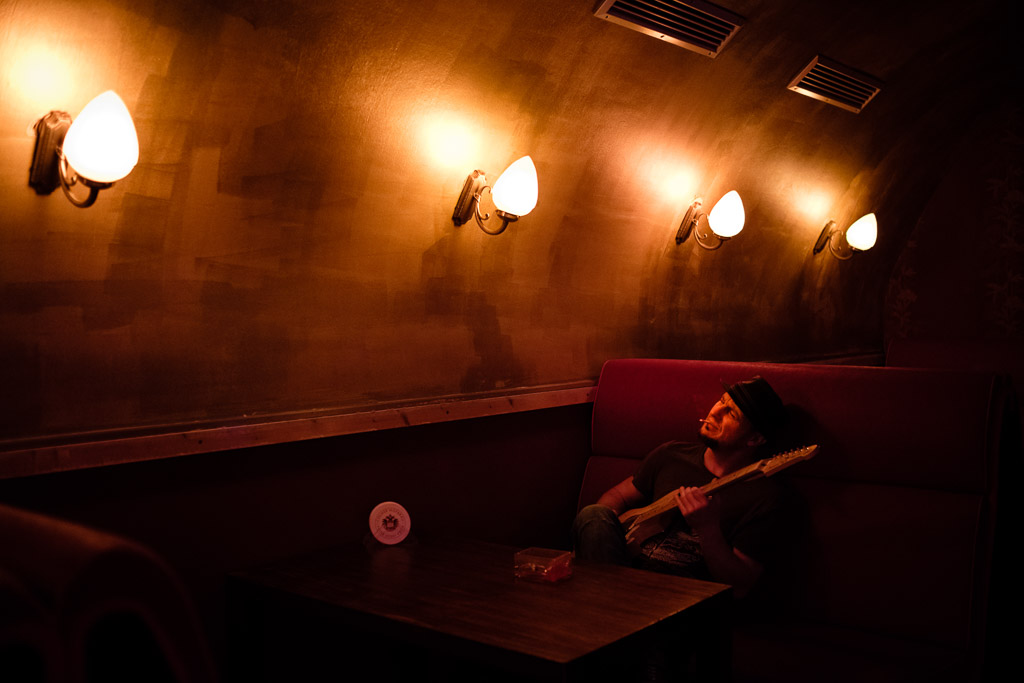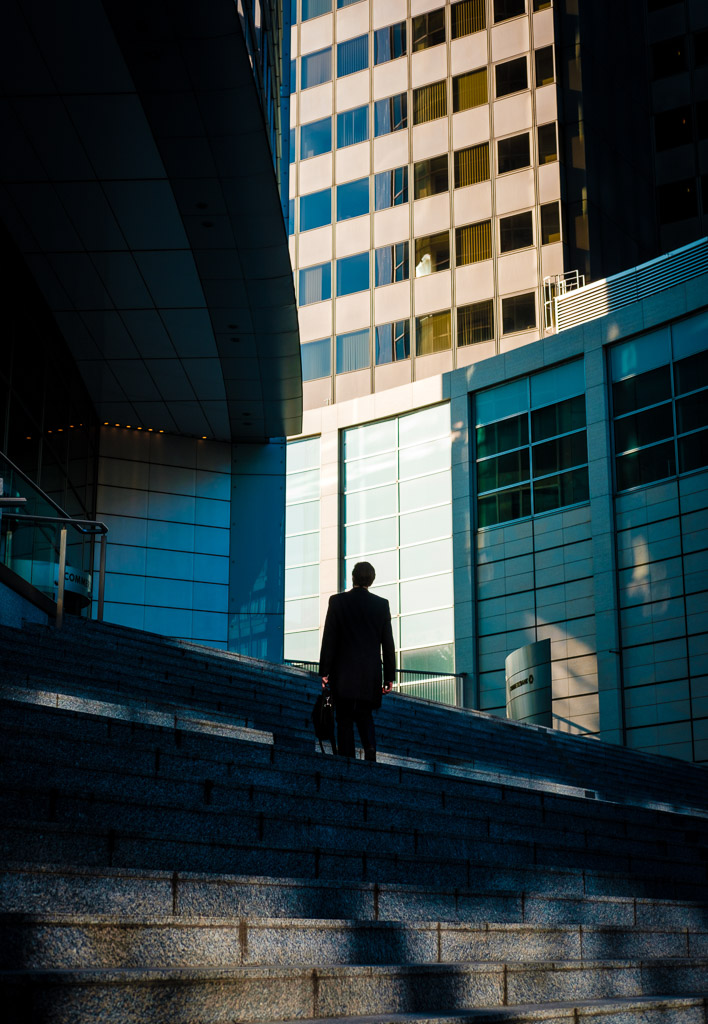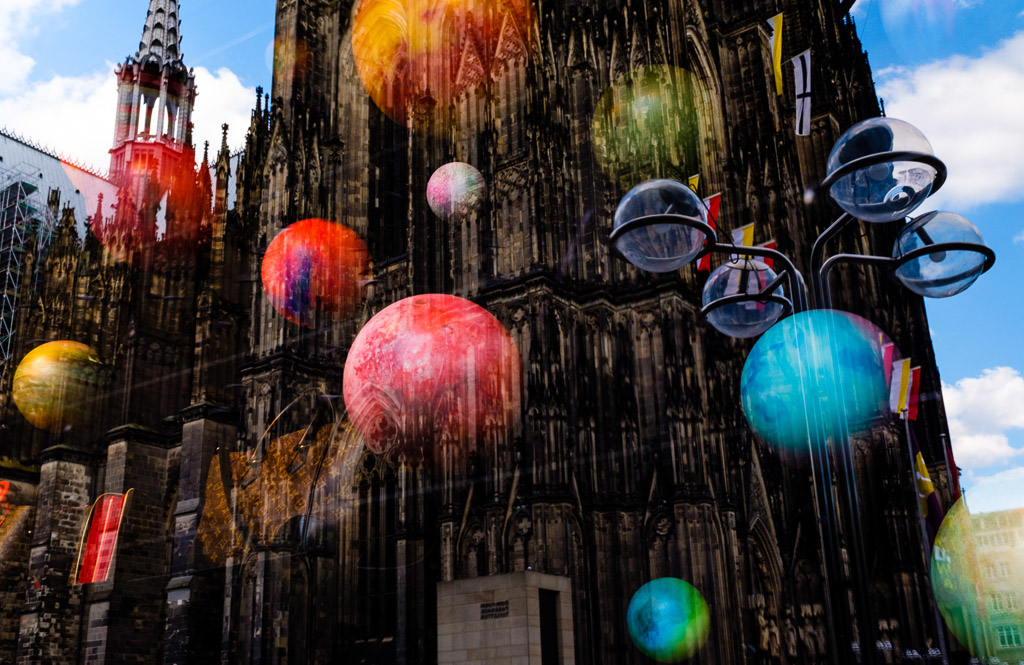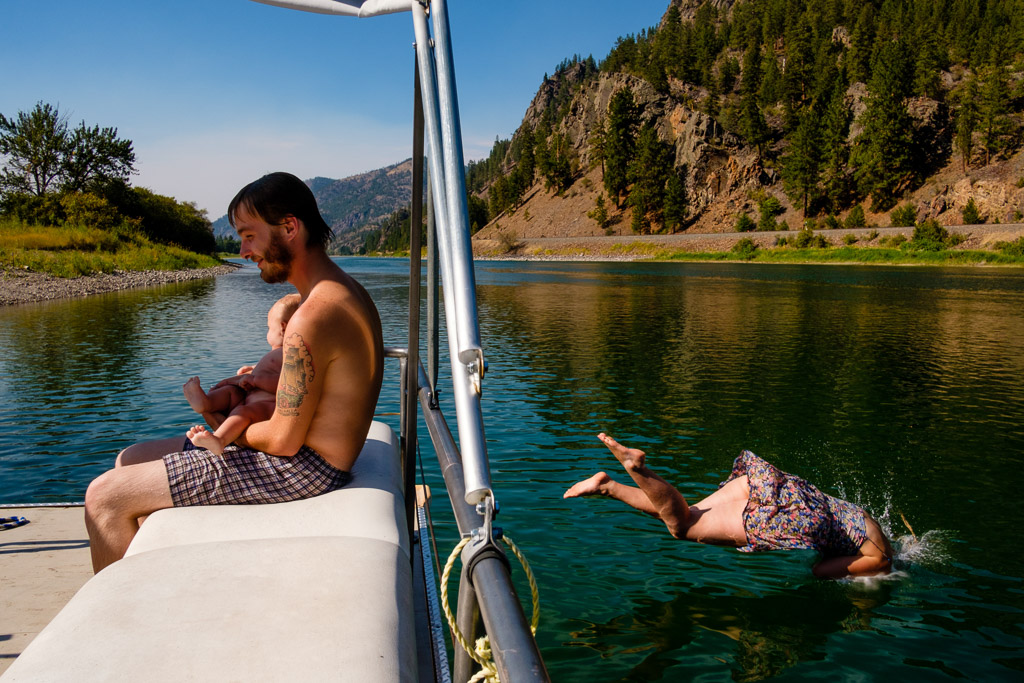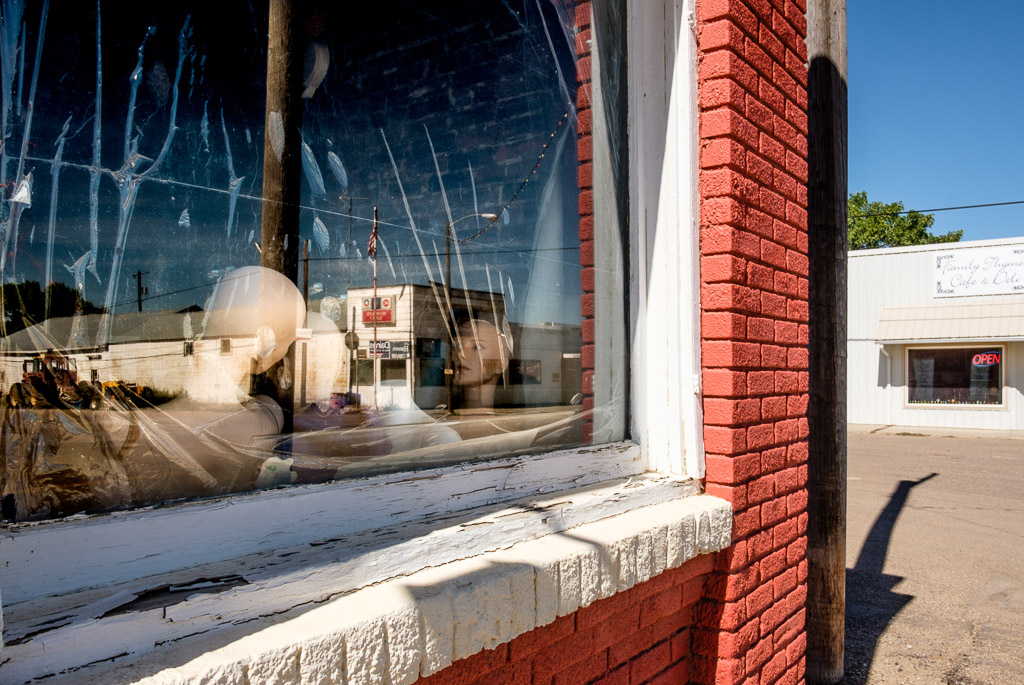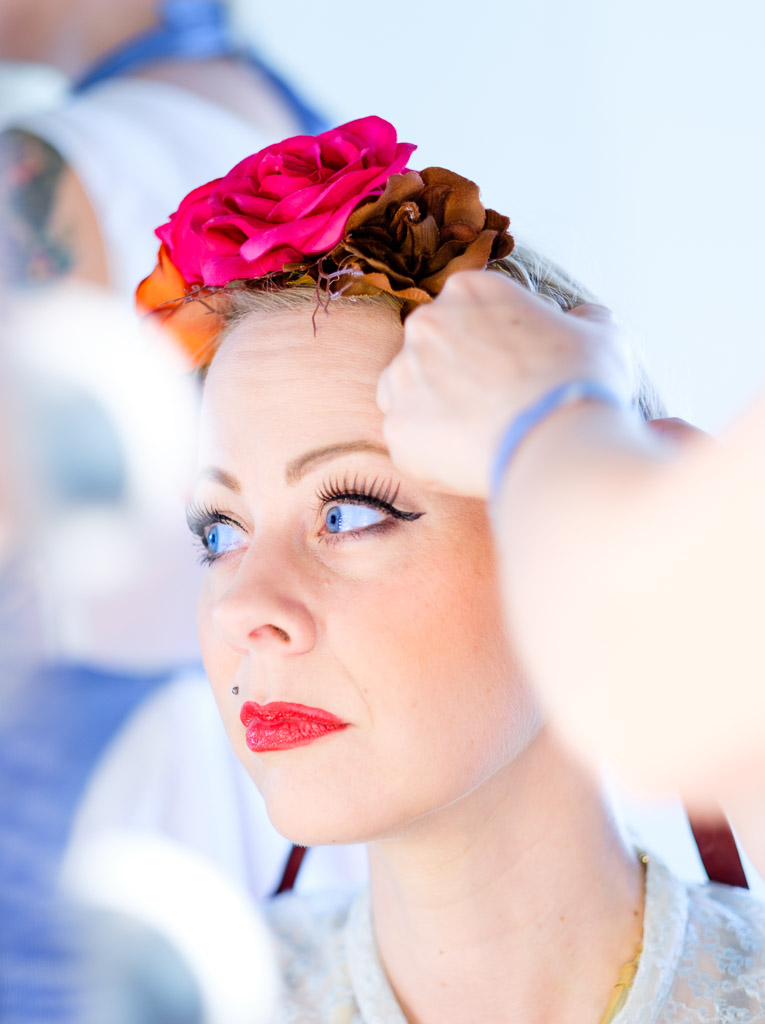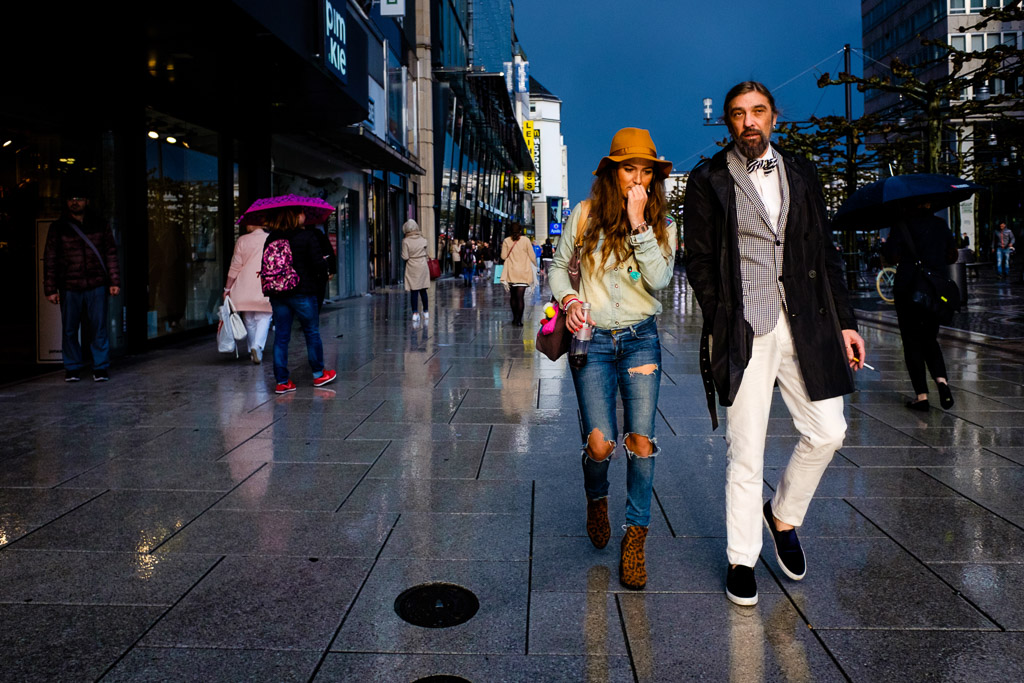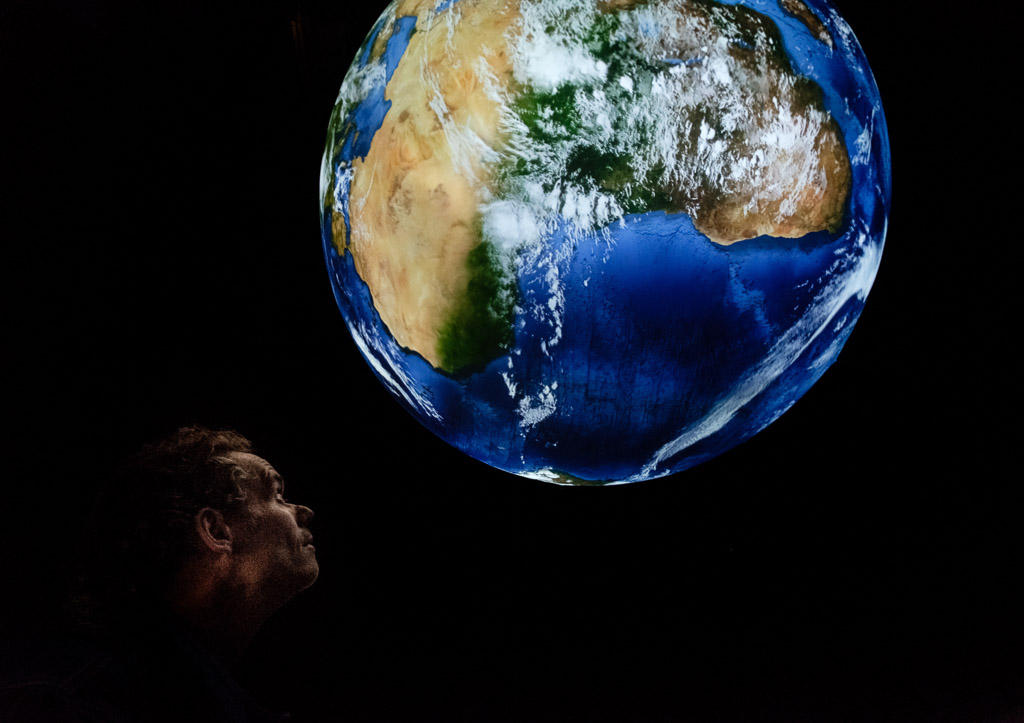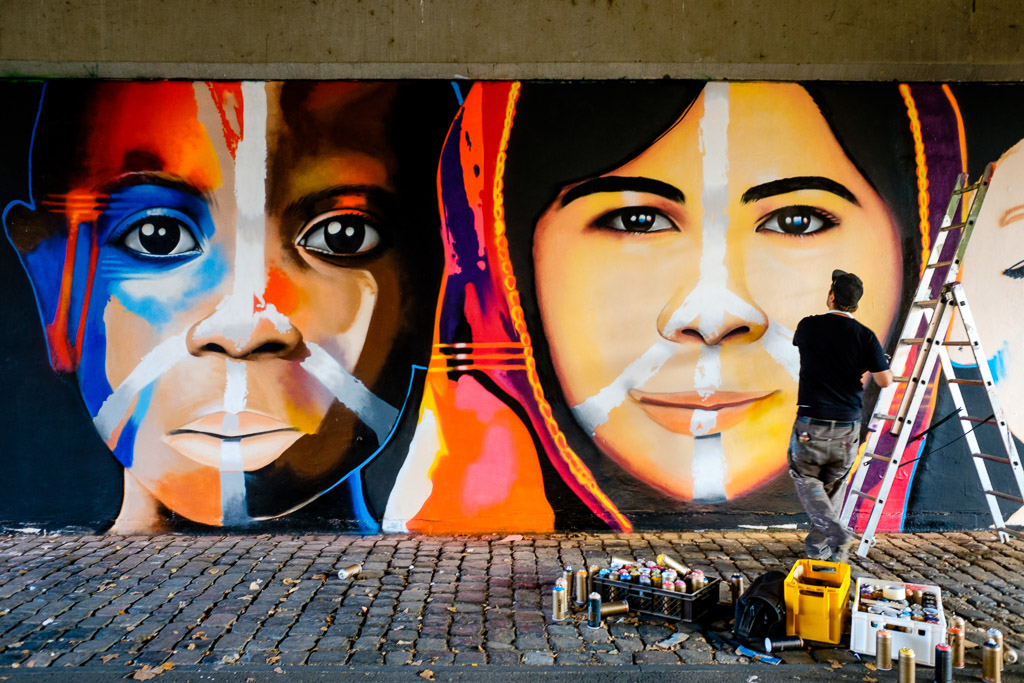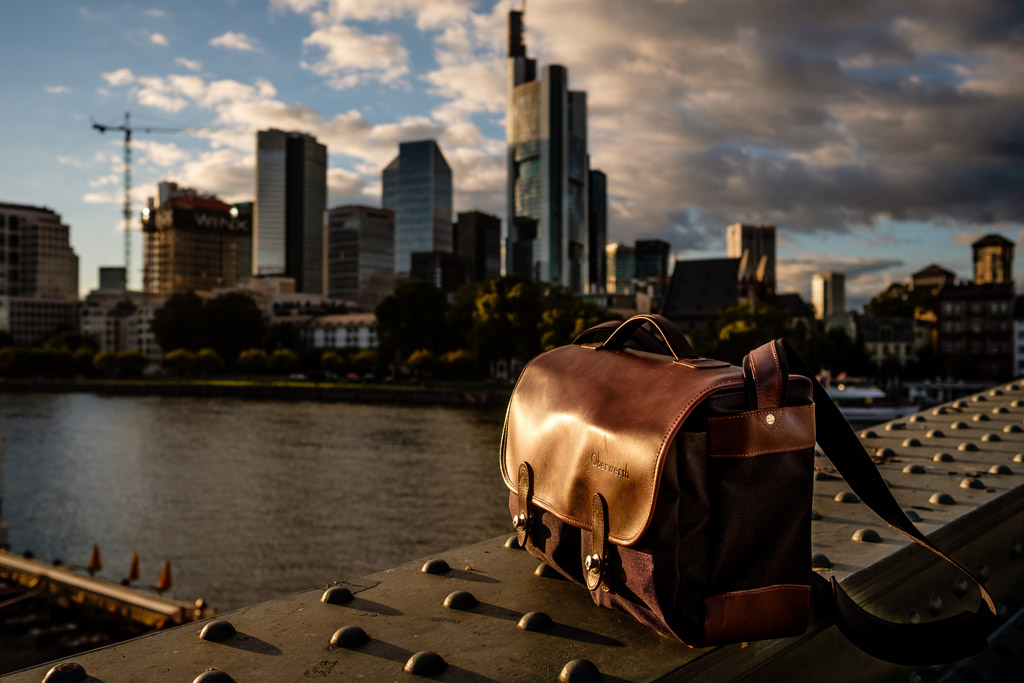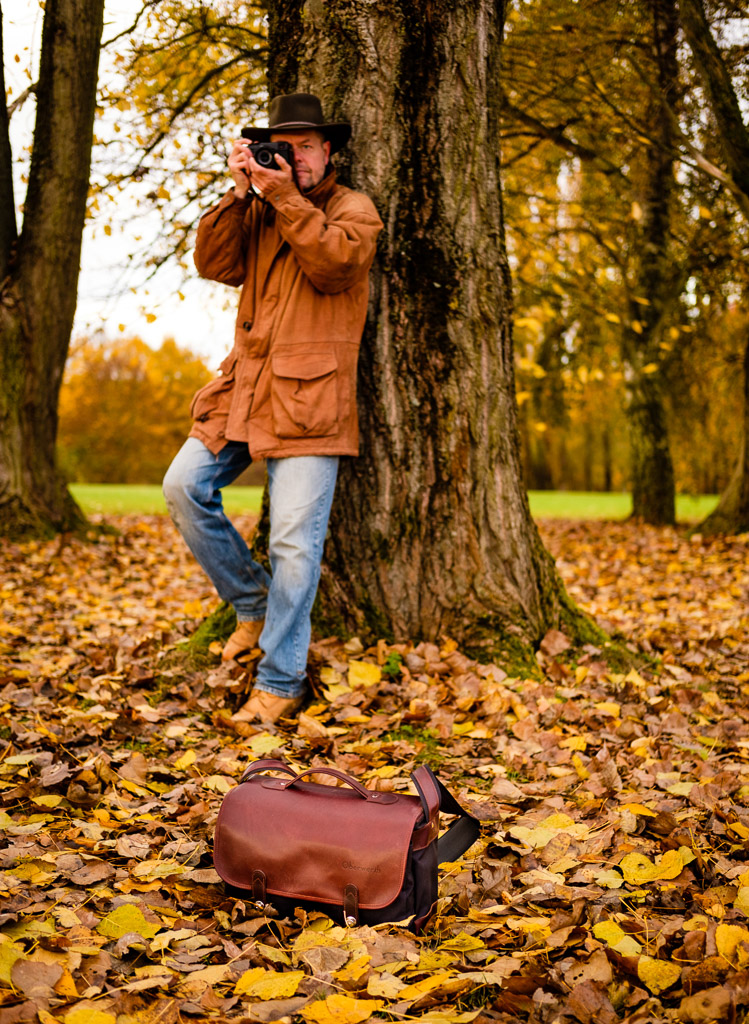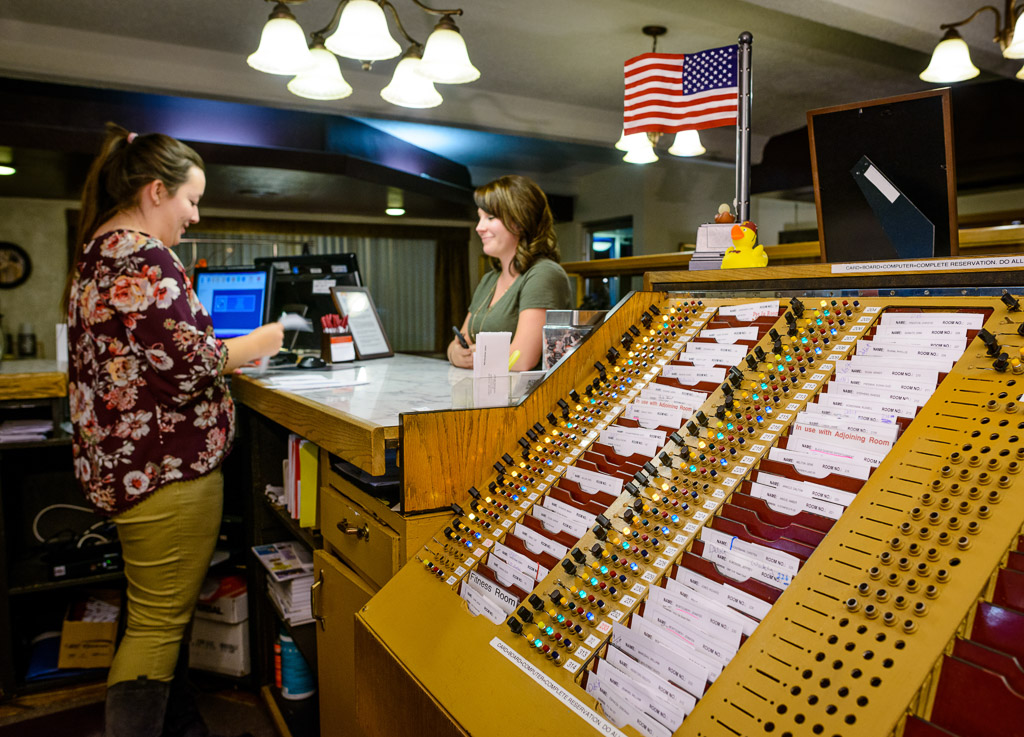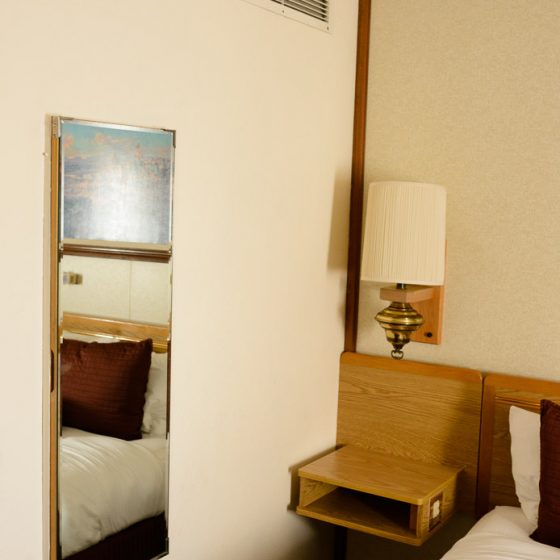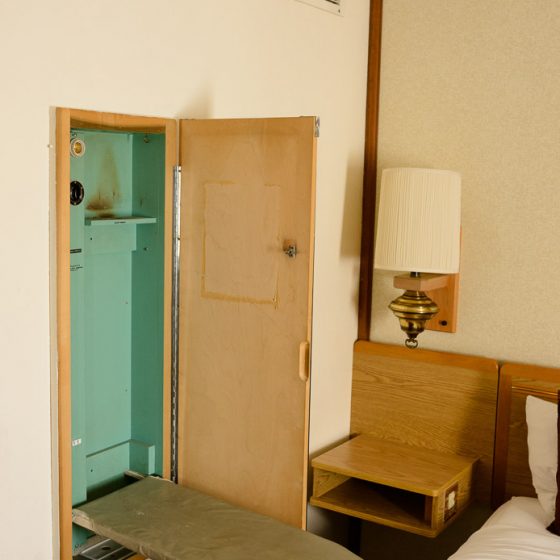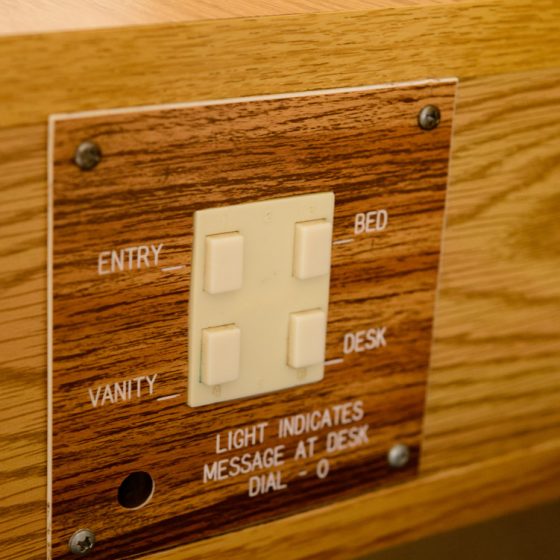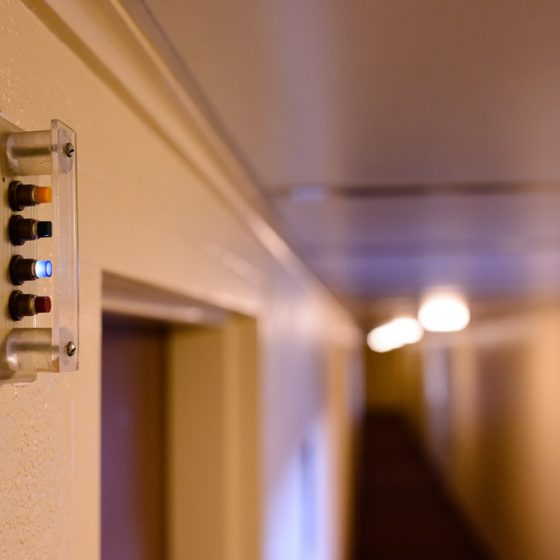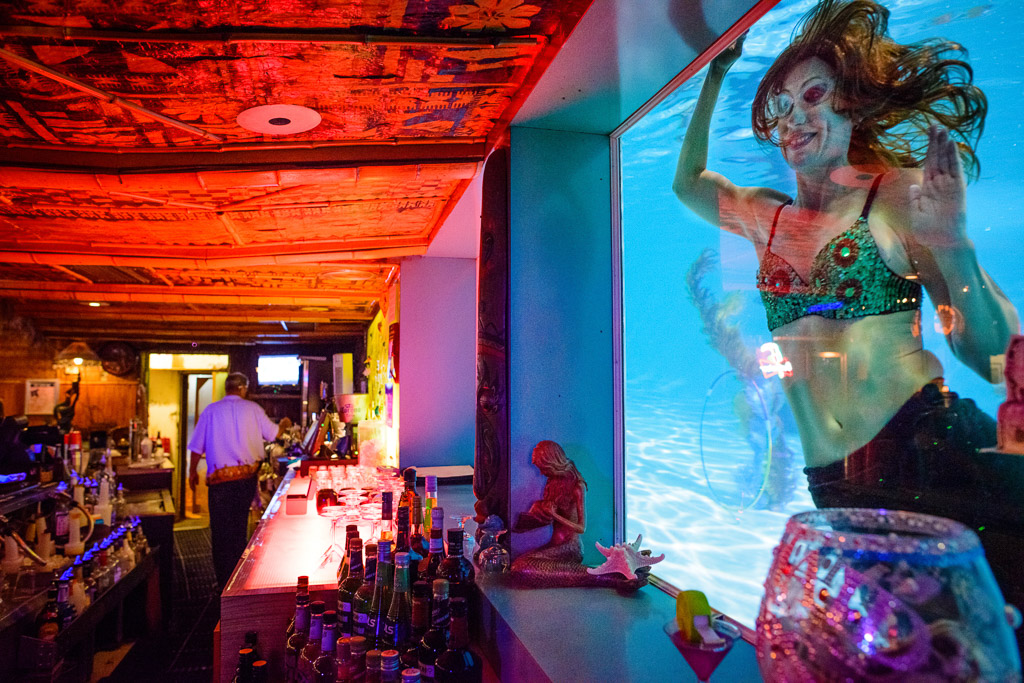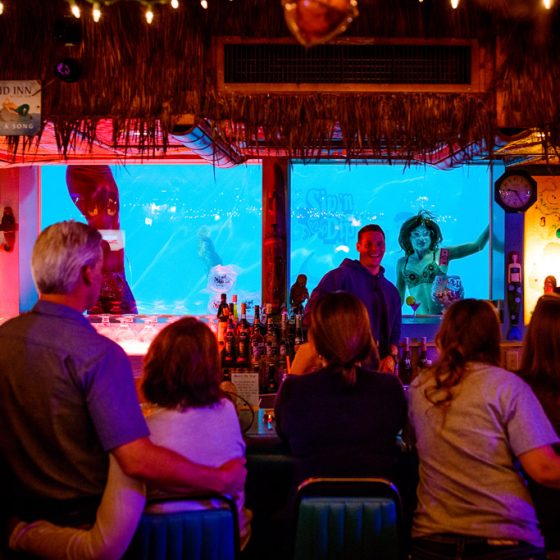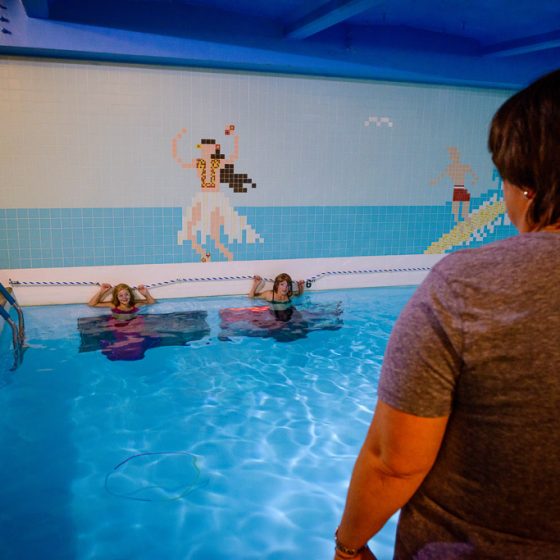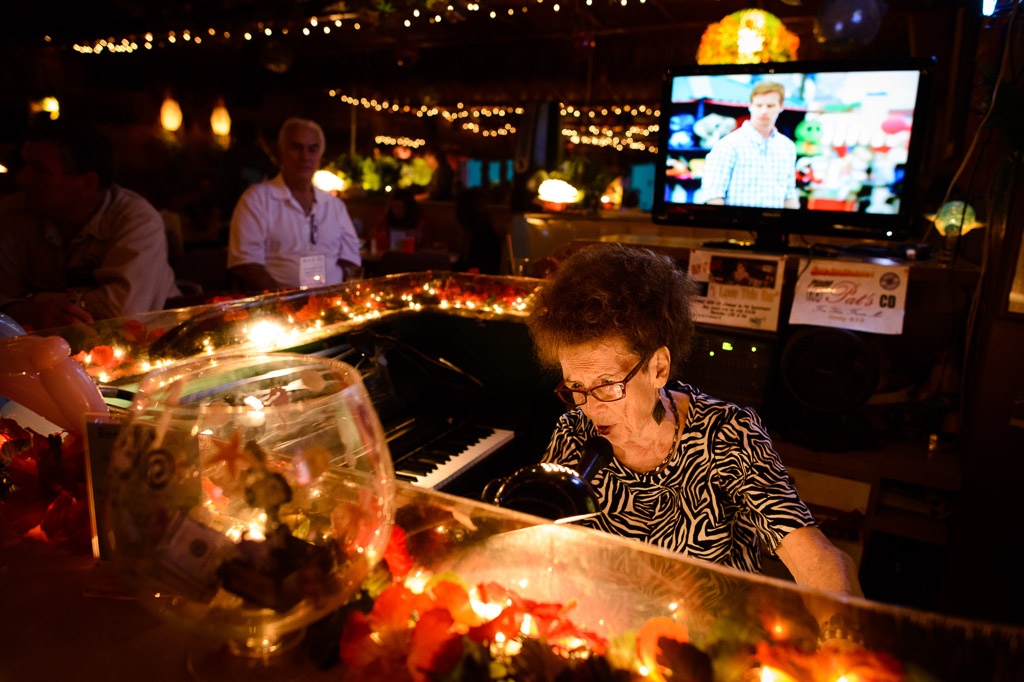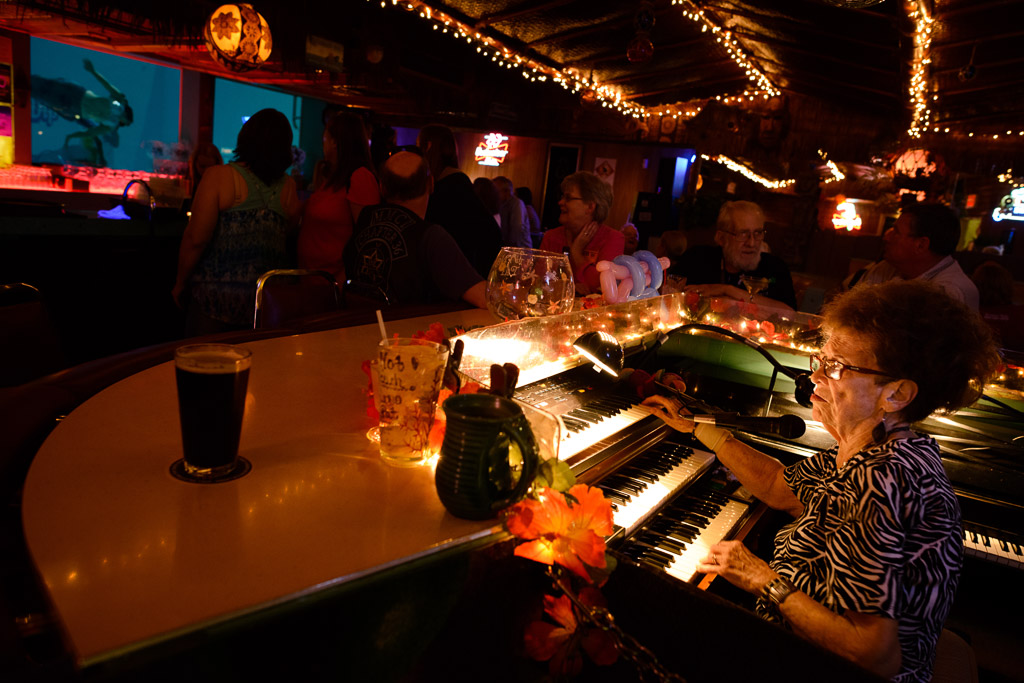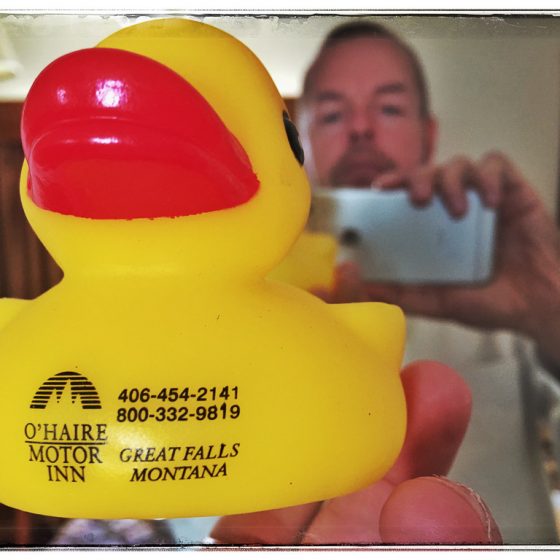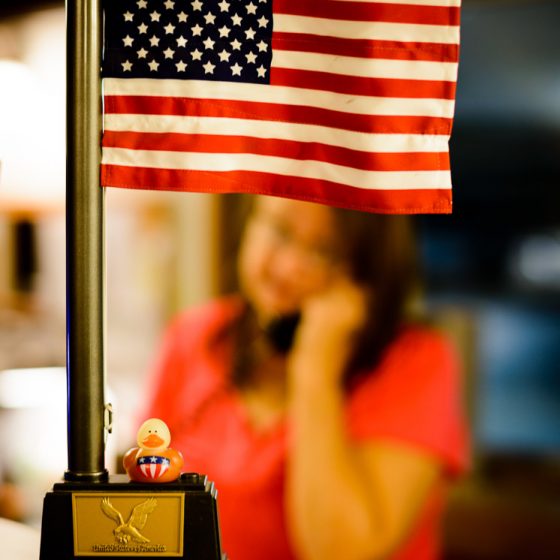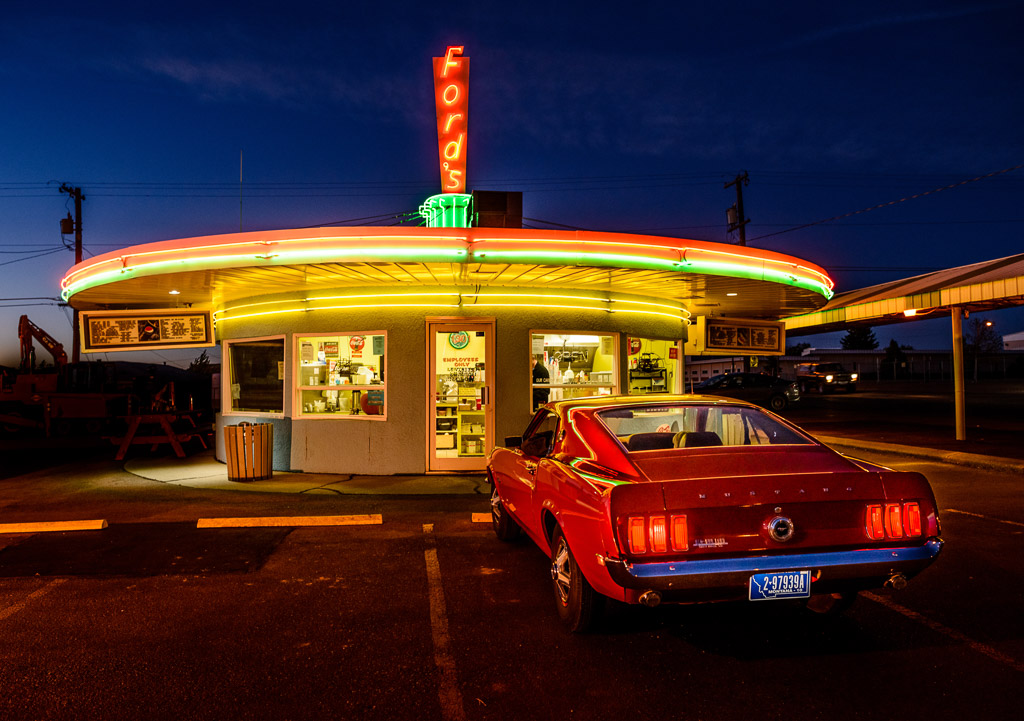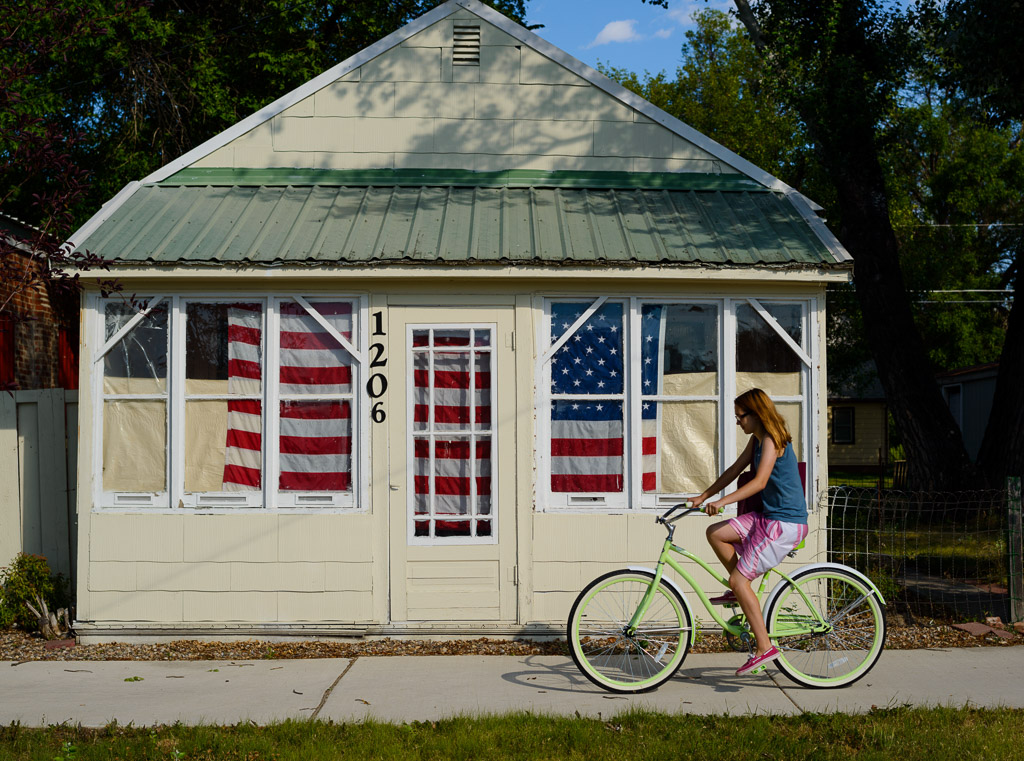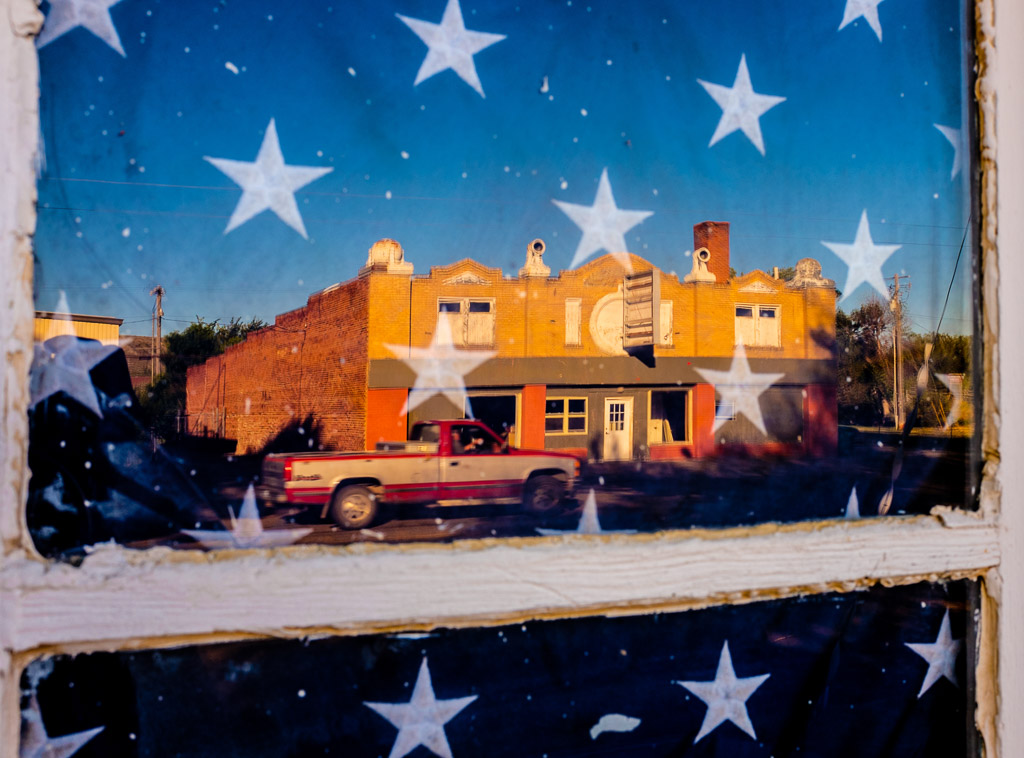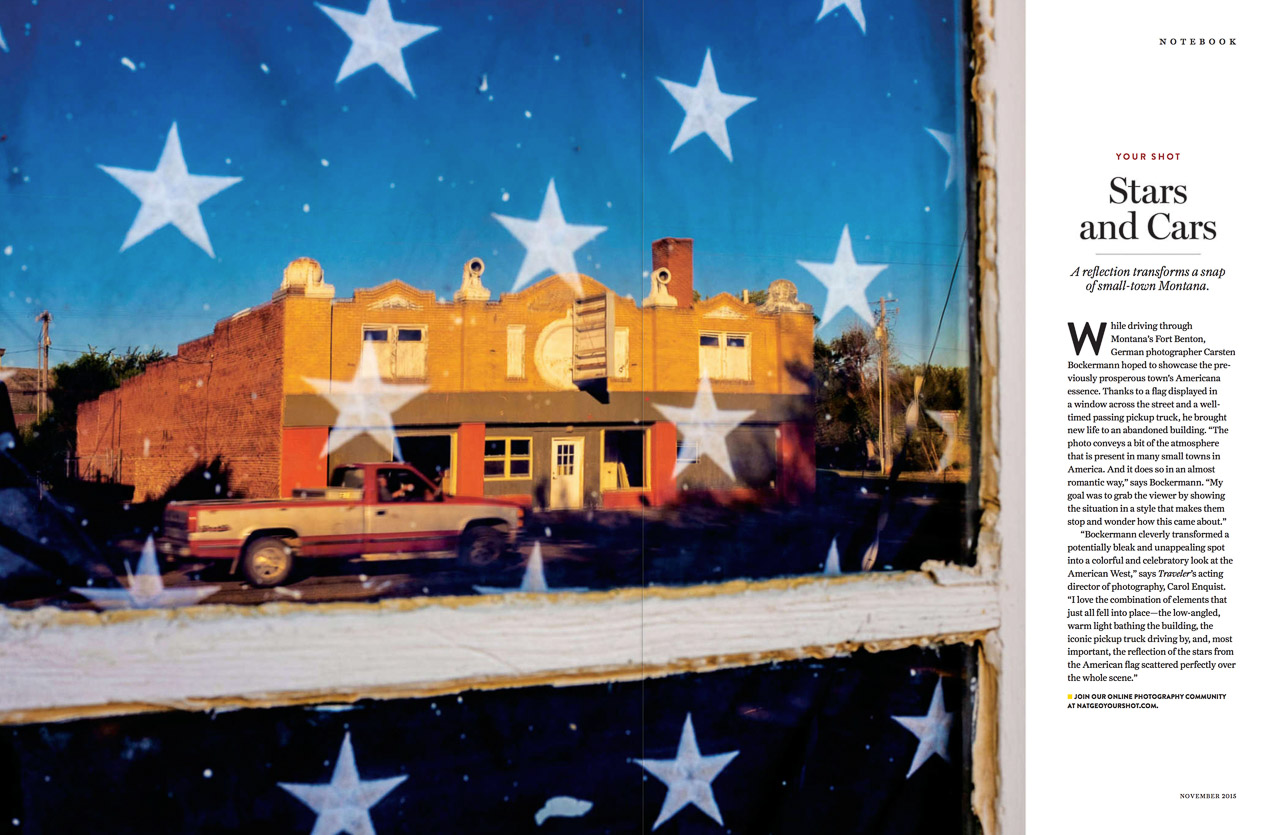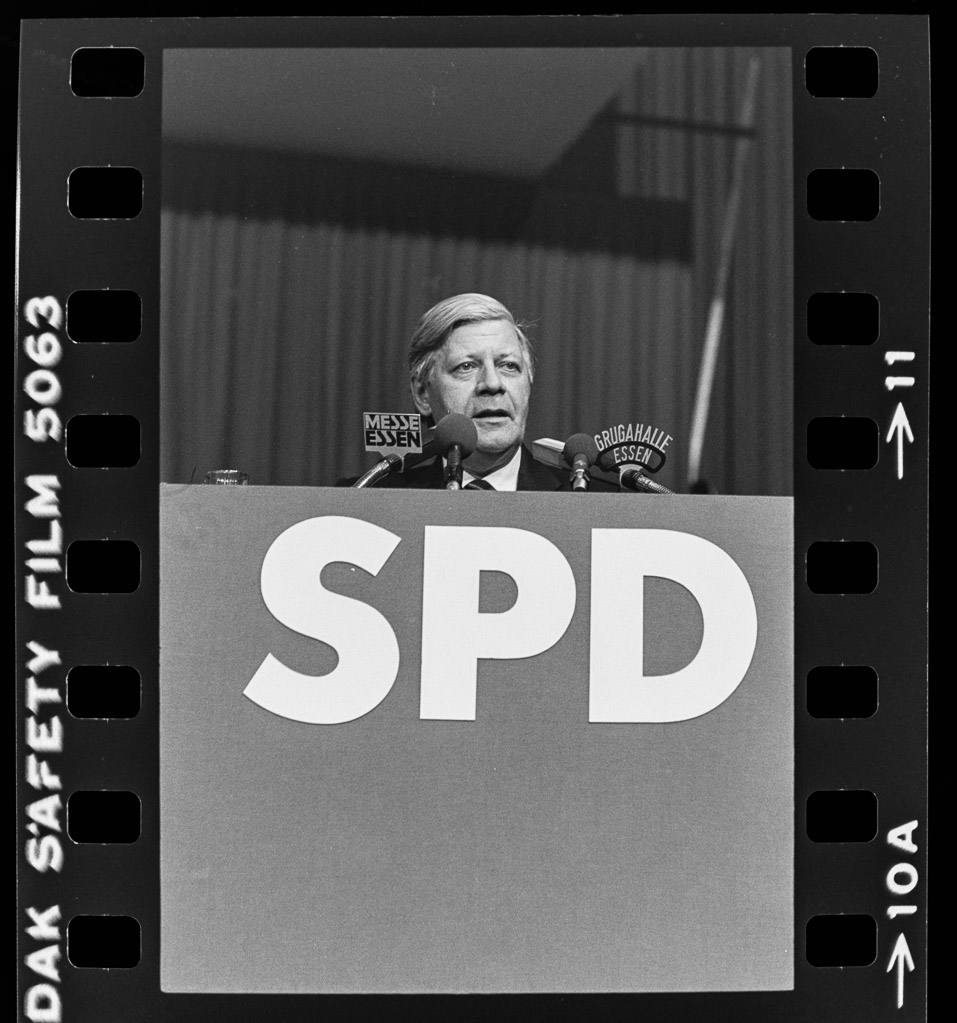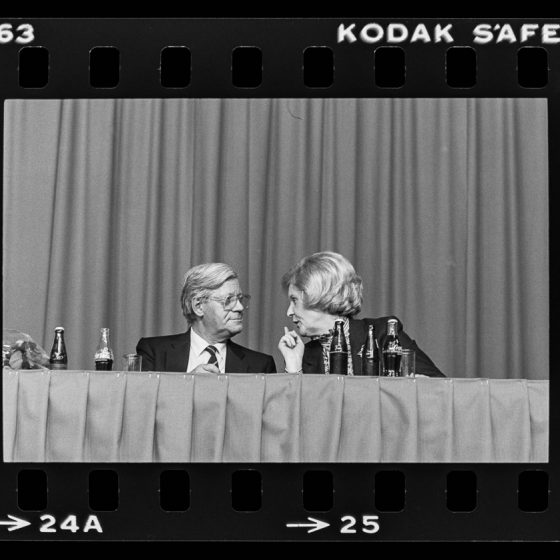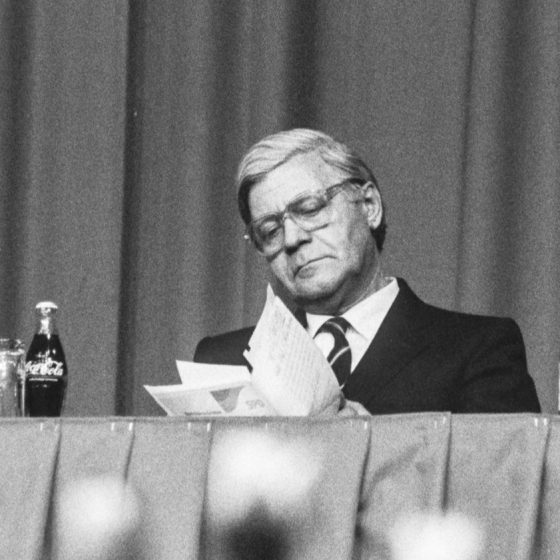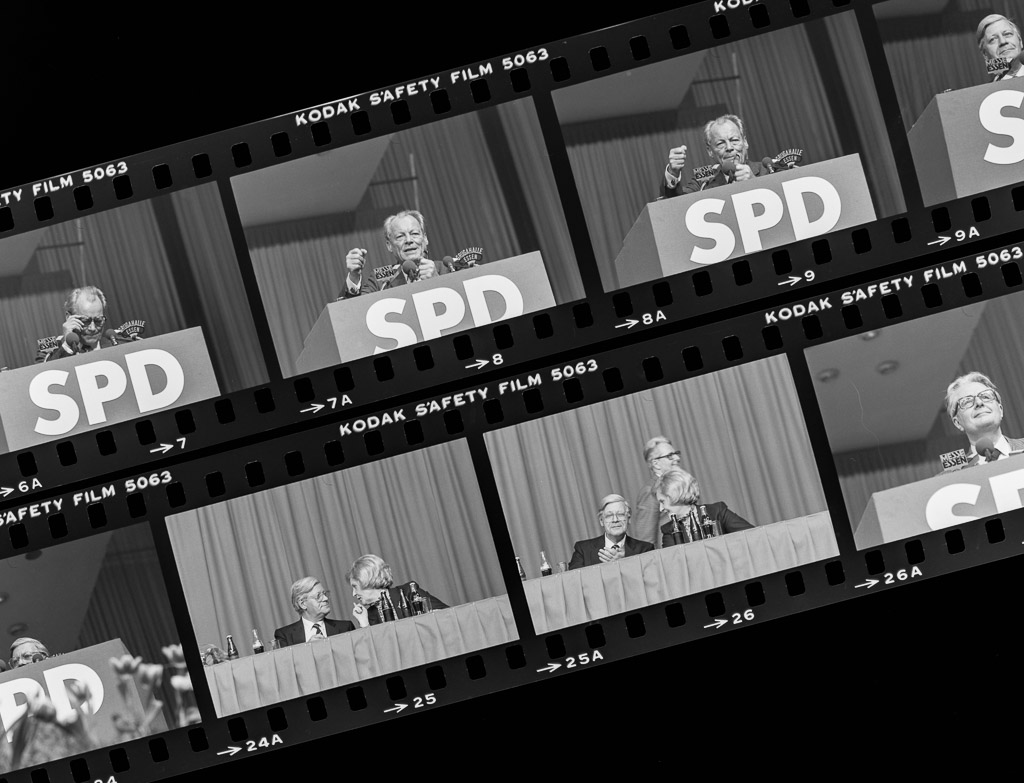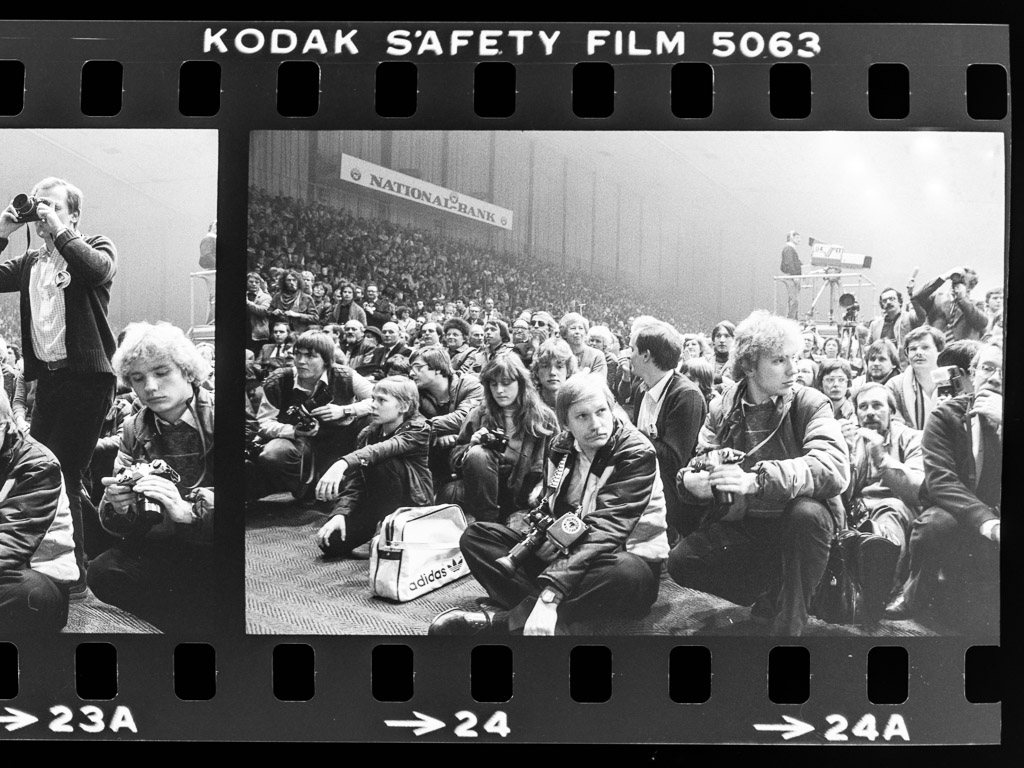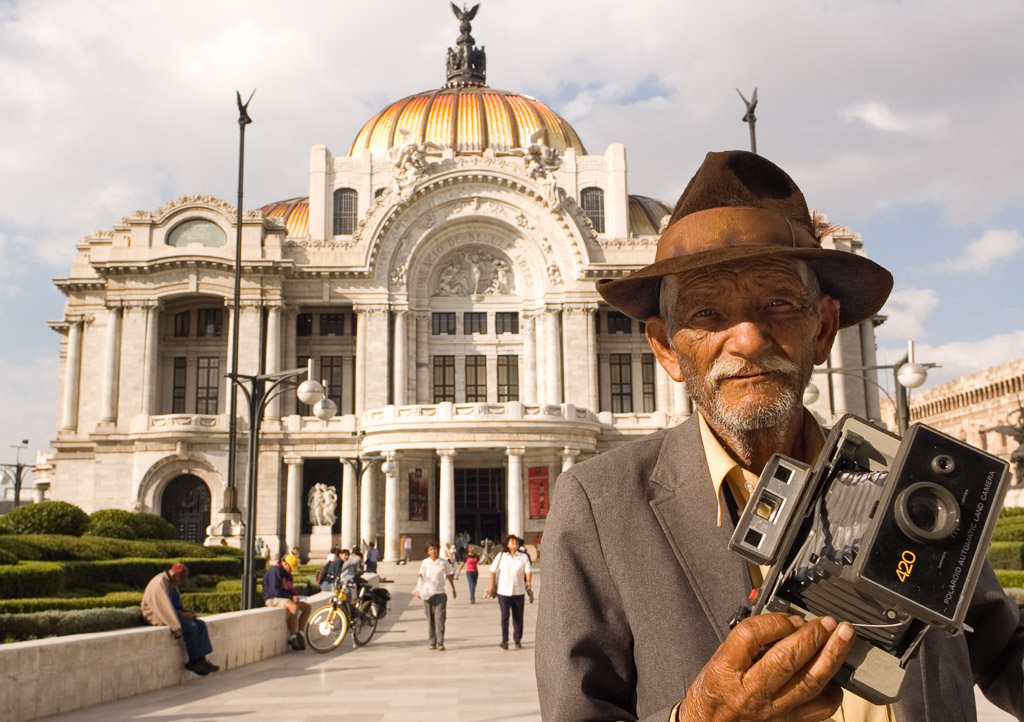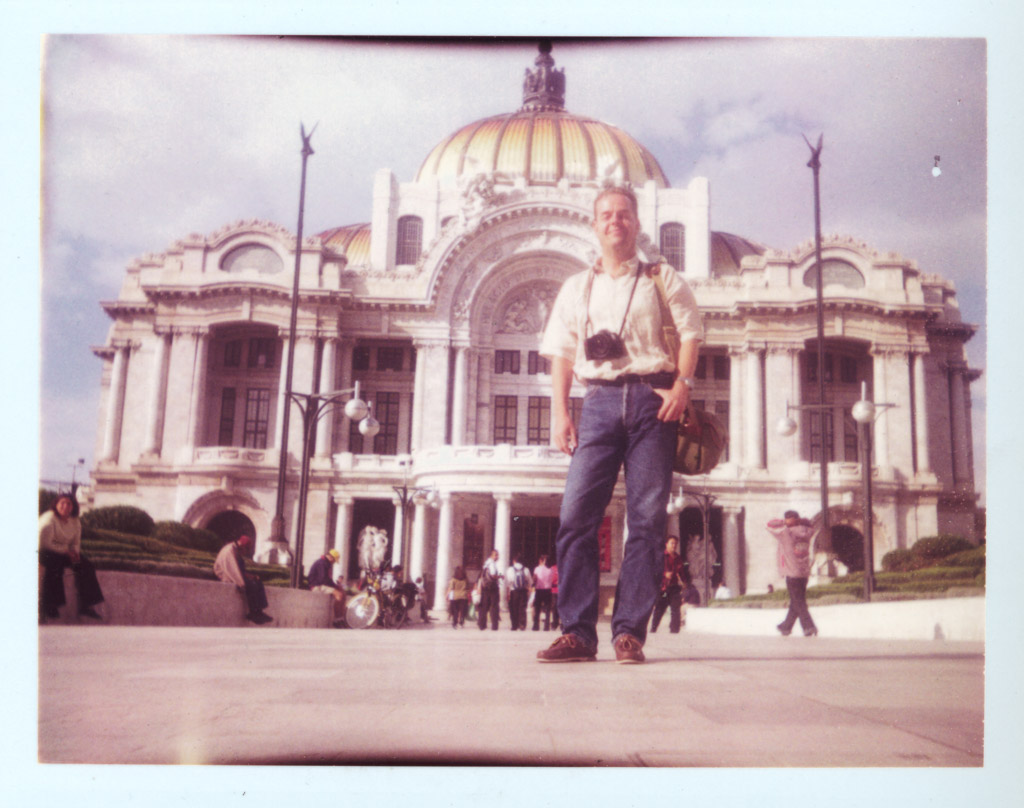Singles: Brazilian Street Festival, New York City
Back in the early and mid-1990s, I traveled to New York City a number of times to photograph on the streets of this vibrant metropolis that was so much more interesting than the cities in my native Germany. Apart from the action and its phenomenally diverse and interesting inhabitants, what sets the city apart from others is that special quality of light that comes from the interplay of bright areas and shadows.
As long as the sun is shining, that is. On the day I ran into a Brazilian street festival in 1994, this was not quite the case.
In fact, the light on the streets between the tall buildings was pretty poor. As I was shooting ISO 100 slide film at the time, this meant I'd have to use a very slow shutter speed, probably 1/8 of a second. Consequently, the people dancing to the music would get blurred.
The only way of getting some more light onto the scene was to use a little bit of flash. Mixing the flash with the ambient light, I could overlay the motion blur with a sharp, colorful rendition, making the action more prominent and conveying a stronger sense of the dynamics of the scene than mere sunlight would have allowed me to.
Elvis meets the Pope
No, I’m not crazy. And no, this is not about photoshopping images of situations that never happened. The fact of the matter is that while the Pope in this story is the real thing, Elvis is, ahem, not so much.
Last summer I saw quite a few homemade-looking billboards next to country roads in my area, advertising an Elvis Museum (https://www.elvismuseum.de/). Of course I was curious, and on the next of the museum’s monthly open-house dates, I drove there.
As it turned out, the place is run by Jonny Winters and his wife, Irma Stanton. It is full of Elvis paraphernalia. Concert tickets, LPs, pictures, guitars, posters and even the barber’s chair from the shop where Elvis had his hair cut while he was stationed in Friedberg, Germany. Apart from showcasing items that in one way or another have to do with the life and achievements of Elvis Presley, Jonny has also been an Elvis impersonator for almost 40 years. He jokes that being Elvis keeps him from aging, as the singer never got older than 42.
Back in 1979 he was announced as Jonny Winter at a concert in Germany, as the presenter didn’t like his real name that much. He took on that name and later added the s at the end, so as not to be confused with Johnny Winter, the blues musician.
Back in 2010, Jonny had to stay in a local catholic hospital. He liked the way the doctors and the nuns treated him and proposed to show his gratitude by performing gospel songs at the hospital’s Christmas celebration. The real Elvis had been very successful in this genre. The nuns liked the idea, but eventually the Mother Superior intervened, saying she wasn’t certain if that kind of music was truly up to Christian standards. Irma, Jonny’s wife, got a little upset. She offered to record a few songs on CD and send them to the Vatican for examination.
And that's what they did. A few weeks passed, then the Vatican replied. They liked the idea, liked the music and suggested that Jonny come and play at the Pope’s General Audience in St. Peter’s Square. And that’s what he did for the first time in 2011.
Since then, Jonny and Irma have organized annual trips to Rome for fellow Elvis fans and Gospel singers. I accompanied them in mid-March of 2018.
The group consisted of 20 people, including Jonny and Irma. Most of them were friends and regular visitors to the Elvis Museum, and almost all were excellent singers.
The first day was spent seeing some of the sights Rome has to offer in abundance. Walking around the city with Elvis a.k.a. Jonny, I noticed how many people looked at him curiously or even took his picture, more or less unnoticed.
The second day was the day of the Papal General Audience. Being in St. Peter’s Square in perfect weather, absolutely clear skies and a temperature around 17C (that’s about 63F for you antimetricands), surrounded by thousands from all over the world, was an experience in itself. Singing gospel songs while waiting for the Holy Father made it special. As a matter of fact, the announcer called out the group as The Gospel Singers from Kircheib, Germany. As luck would have it, Pope Francis decided to have his popemobile drive around where the group was standing, so we got very close to him.
Now carrying his guitar, Jonny was approached by people wherever we went. Quite a few wanted to have their picture taken with him or asked for an autograph. Playing outside at a local bar delighted the patrons as well as the occasional nun passing by.
At a coffee place at the Mercato Trionfale we ran into a waiter who was overjoyed of seeing Jonny. He had his colleagues take picture of him with Jonny on their phones and was truly happy to get an autograph.
We spent the rest of the day seeing some more sights and visiting the Hard Rock Cafe, which has a vest on display that belonged to the real Elvis.
Returning to the hotel in the evening, we met a group from Messina, Sicily, by pure coincidence. They, too, were all over Elvis/Jonny, had their pictures taken and asked for specific songs. And yes, most of them sang along. When Jonny played Jailhouse Rock, nobody stayed in their seat.
The next morning saw a few gospel songs being sung in the hotel’s lobby while waiting for transportation to the airport. It had been an exciting and exhausting week for everybody, but mainly for Jonny.
I find it incredible that Elvis Presley is still so amazingly popular more than 40 years after his death. He must have done something right.
The 2017 dozen
With the year 2017 being almost over, I browsed the pictures I took over the last 12 months and selected a dozen pictures that are important to me.
Another case of serendipity
For a people photographer, planning photographic opportunities is not an easy thing. Even more so when he’s traveling and wants to convey the mood of a place. You can’t really plan whom you’re going to meet and what the situation will be like unless you start with a preconceived notion, which is exactly the opposite of what I want to do when I explore a new location. So what can be done? Let serendipity come to the rescue.
What exactly is serendipity? Here’s what Wikipedia says:
Serendipity means a "fortunate happenstance" or "pleasant surprise". It was coined by Horace Walpole in 1754. In a letter he wrote to a friend Walpole explained an unexpected discovery he had made by reference to a Persian fairy tale, The Three Princes of Serendip. The princes, he told his correspondent, were “always making discoveries, by accidents and sagacity, of things which they were not in quest of”.
While I’m unfortunately not a prince, what is described here happens to me on my travels all the time. Let me give you an example: recently, I traveled throughout Montana again in pursuit of capturing the wonderful spirit of this state (hint: there is more than one spirit…). I spent several days in Hot Springs, a quaint little town in the western part of the state which is full of interesting people. One day I tried to visit a friend who lives in the hills about 20 miles from the town. I wanted my visit to be a surprise, so I didn’t call her in advance. On the gravel road that leads to her cabin, only about 300 ft. from her gate, the right front tire of my rental car had a blowout. I walked up to her place, only to discover she was not home. Changing the tire with a whimsical scissor jack at 37°F in the rain on a muddy road was no fun. Using what is commonly called ‘the donut’, I slowly drove all the way to Polson and got new rubber on that front wheel. When all was done, it was 6 p.m. and I was back at my motel without a photograph worth talking about.
As the previous weeks of travel had been quite exhausting and I didn’t feel too energetic, I decided to give up searching for the day. I retreated to my room, started up the computer and worked on the pictures of the previous day. At some point I realized it was getting pretty cold (we’re in Montana…) and the electric heater in my room, not much bigger than a deck of cards (I am not kidding) just didn’t cut it. The solution would be to get a second blanket, so I walked over to the motel’s office. And yes, I did take my cameras because, after all, this is Hot Springs and in Hot Springs you never know.
The office was deserted, a weathered sign informing me that there would be somebody around the next morning at 8 a.m., which was no good news at all. But there was something in the air, a sound, a sound that resembled a guitar, yet it was strangely different. Following the direction of my ears, much like a dog follows its nose, led me to the porch on the motel’s street side. A gentleman was sitting there, smoking a cigar and playing what I soon would learn to be a Dobro guitar. He replied to my introduction in a strong southern drawl. As I had lived in South Carolina for a year back in the 1990s, I recognized his way of speech and told him how great it was to finally meet someone without an accent in Montana. This immediately broke the ice, of which I think there was very little to begin with, and within 30 seconds I found myself in his room, where he introduced me to his wife. It turned out they were from North Carolina (OK, slight accent) and had been travelling the American West for a few weeks. His name is Donnie ‘Dobro’ Scott, his wife’s is Barbara. He explained about the Dobro guitar (look it up on Wikipedia if you’re not familiar with it) and then the two of them performed a very romantic love song in that motel room:
After some more conversation and some tasting of the whisky Donnie always carries on his travels, he felt it was time to return to the pleasures of smoking a cigar. That’s when I took the second photo.
As happens so often, serendipity presented an opportunity that wouldn’t have come up in my dreams, let alone in any kind of planning. An open mind, an open heart and some familiarity with the tools at hand were all it took to capture this marvelous situation.
And, by the way, Barbara knew where the motel’s laundry room was, so I did eventually get that second blanket I had come for in the first place.
The 2016 dozen
With 2016 just behind me, I went through the pictures I took over the course of the year and selected 12 of my favorites. Not necessarily the 'best' ones (I find the concept of ranking each and everything a little odd, anyway), but 12 photographs that I will certainly remember.
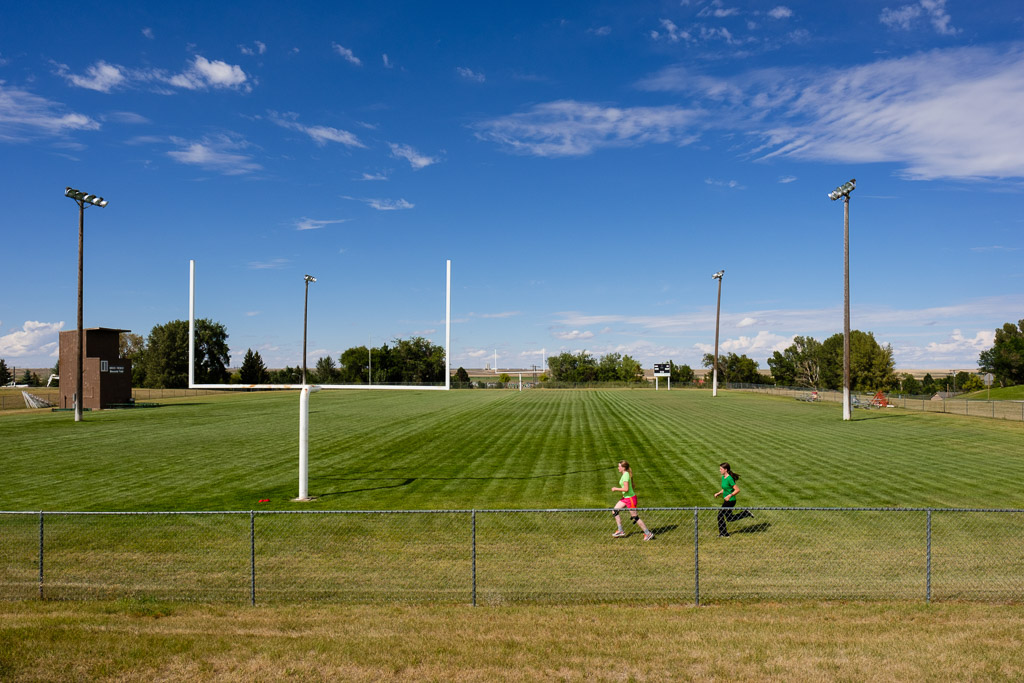
Review of the Oberwerth München camera bag
Disclaimer: I am an Oberwerth Ambassador. This means they send me stuff to review (and actually seem to listen to what I have to say about it). However, I don't get any compensation for this. The words you read here reflect my own opinion.
As you know, I don't usually do equipment reviews on my blog. There are entire websites dedicated to reviewing cameras and lenses and I don't intend to compete with them, nor do I want to convince my readers that my choice would also be right for them. However, at times I come across a piece of equipment that is not so much in the mainstream as the latest CaNikoLeica, yet I think it deserves some exposure. One of these items is the Oberwerth München camera bag.
More than a quarter of a century ago, in summer of 1991, I switched from the big and heavy SLR system I had used to what could be called a mirrorless system, the rangefinder cameras made by Leica. These cameras and their lenses were far smaller and more lightweight than their SLR counterparts. Consequently, my existing photo bag and the new system didn’t really match very well.
However, this was a problem that could quickly be taken care of. I discovered bags, made by a British company, which seemed to have been designed for my new camera system. Being narrow and quite tall, their layout was very different from that of the bags I had used before. They hugged my body much more comfortably, didn’t stand out too much and allowed for carrying two lenses (or a camera body and a lens) above each other. Over the years I bought several of these bags in different colors and slightly varied configurations. Apart from a few small things I was very happy. After moving to another camera system (Fujifilm X-Series), everything still fit very well and the bags provided excellent protection for my gear. They are watertight even in very heavy rain, which is not much of a surprise considering the manufacturer started with making fishing bags. To this day, the design of the bags makes no secret of this fact.
In late summer of this year, a friend pointed out the Oberwerth bags to me. The München model immediately caught my eye as its size and its general layout are very similar to that of the British company’s model I had used so far. Still, the München leaves a strongly different impression. Oberwerth chose excellent materials and put a lot of thought into small and useful details. Also, the bag is extremely well made. Examining and handling it, you will realize right away that it is a high-quality item.
Being made of Cordura and leather, the bag is somewhat more rigid than my other camera bags, which are made of canvas, yet it is far from being hard. The carrying strap (which features a built-in cut-resistant wire!) is comparatively stiff, which has an advantage over cotton straps insofar as the bag doesn’t swing that much back and forth when you move.
There are some small details I really like about the bag. For instance, there is a small inside compartment that can be closed by a zipper and holds smaller items or paperwork. At the back of the bag you can find an almost invisible strap that can be used to securely attach your München to the handle of a trolley.
The München bag is held close by LOXX fasteners. They look great, have a very precise feel to them and work perfectly. And, most importantly: other than Velcro fasteners, which some photo bags have, they work silently. There is nothing worse than fasteners that ruin the moment when the photographer opens his bag. However, the arrangement of the fasteners could be the matter of an argument. I prefer the concept with straps that are sewn to the bag at their lower end and have the fastener near the upper one. This way, the fastener can be reached more easily. Also, the bag doesn’t get pulled down when closing it. I have voiced my opinion to the Oberwerth people. Let’s see if future designs will have a different arrangement.
Stowing your equipment and enjoying the look and feel of a photo bag are important, yet the main questions are how well the gear will be protected and, even more importantly, how comfortable is it to carry the bag. The last question is really critical for me as I have my cameras with me almost every day.
In terms of protection I can say that even during an intense rain shower no water entered the bag. Even the leather looks like new after I let it dry slowly (just don’t put it in front of a heater if it’s wet).
The real surprise for me is how pleasant it is to carry the München. Although it is 200g (that’s about 6.5 ounces) heavier than my previous bag, it actually feels lighter after hours of carrying it. I’m not sure how this comes about. Most probably the very well designed shoulder pad, the right flexibility of the carrying strap and the fact that the bag is more rigid all play a role here.
In a nutshell: an excellent bag, especially for mirrorless systems (if you get additional dividers), a pleasure to carry and very well made. Maybe a little too nice to be used in the jungle, but certainly fit for bad weather.
Visiting Jeannie – A stay at the O’Haire Motor Inn
When I was a boy, one of my favorite TV shows was I dream of Jeannie with Barbara Eden playing a 2,000-year-old genie who gets freed from her bottle by an astronaut (played by Larry Hagman) with whom she falls in love. A few years ago I bought all episodes of the series on DVD and had a great time indulging in the atmosphere of the 1960s.
What I didn’t know then is that I would get to know this special ambience firsthand, live and in 3D.
In September of this year, I drove to Great Falls, Montana. It was a stop on my way to the Missouri Breaks (more on that area in a later post). I had read about a bar that was supposed to be quite noteworthy, the Sip ‘n Dip Lounge. It’s a tiki bar that opened in 1962, a time when Polynesian themes were ‘in’, and intended to take a look at and possibly photograph this establishment.
What I didn’t know before is that the Sip ‘n Dip is located inside a motel, the O’Haire Motor Inn, that perfectly preserves the style of the decade during which America, as ordered by John F. Kennedy, would put a man on the moon, both the Rolling Stones and the Beatles gained world-wide popularity, Barbie became a top-seller and technological advances were greeted with an innocent optimism that is hard to imagine in our time.
When Edgar O’Haire opened this motel in 1962, he already had 12 years of experience running a smaller one in Shelby, which incidentally is one if my favorite towns on the Montana Hi-Line. He centered the design of the building around the travelers’ convenience, including features like a heated parking garage, TV and hi-fidelity music systems in every room, an indoor pool and a helipad that was popular with ranchers who came in with their ‘choppers’. With electronics just taking off at the time he built the motel, O’Haire had a Room Status Control Board installed. This allowed the staff to monitor the state of every room from the reception area and signal the maids when to clean a unit.
Walking through the corridors, examining the reception area and enjoying the Sip ‘n Dip Lounge made feel that Jeannie would come around the corner any minute.
The Sip ‘n Dip is truly special, too. Every night from Wednesday through Saturday, one or two women will swim in the pool behind the bar dressed up as mermaids, fishtail and all. The atmosphere is so cool that GQ magazine listed the place as #1 on its list of bars worth flying for.
Holding her own against the competition of the much younger mermaids is “Piano Pat” Spoonheim. Pat is an octogenerian who started singing and playing the piano at the lounge in 1963.
If you’re interested in getting to know more about the O’Haire Motor Inn, I recommend reading the 1966 article from the Tourist Court Journal at http://ohairemotorinn.com/history/.
National Geographic Traveler – Stars and cars in Fort Benton
In the summer of last year, when I was shooting for a story on the Missouri Breaks, I stayed in Fort Benton for a few days. Walking around this beautiful town that had seen its heyday as a trading post in the middle of the nineteenth century, I came across a small house that had a big American flag in its windows. This is what it looked like:
This house stayed on my mind as I wondered how I could make use of this unusual sight. The following evening I realized that the setting sun would illuminate the building across from it, an old brick edifice that was being used for storage, leading to an interesting reflection in the windows with the flag. I tried different angles and waited for something to happen on the street with the hope of getting a third layer into my picture. Passersby and cars went in an out of the frame, but none really seemed to make sense. Eventually, a silver-and-red pickup truck, another symbol of small-town America, slowly drove by. I waited for it to be at what I felt was the right place and got my picture.
I'm happy to report the picture ran as a double-page spread in the November 2015 issue of National Geographic Traveler Magazine.
And yet, the story does not have a happy ending. I passed through Fort Benton again this September and of course looked at the place where I had taken the picture again. This is what the brick building looks like today:
Addendum:
I have just received some more info on the Fort Benton building. Sharalee Smith of the Fort Benton Restoration Committee kindly sent me this:
The building you are asking about was built in 1915 and known for a number of years as LaBarre’s Garage. It was sold sometime in the 1950’s and renamed Fort Benton Motor Company. The building was still known as Fort Benton Motor Co. at the time it was torn down.
Photographing Helmut Schmidt (1918 – 2015)
Earlier this week, on Tuesday, to be more precise, Helmut Schmidt passed away at the age of 96. He was one of the most respected politicians of post-war Germany. As a senator in Hamburg he was instrumental in dealing with the consequences of the 1962 flood and gained widespread popularity. From 1974 through 1982 he served as Chancellor of the Federal Republic of Germany.
The news of his death reminded me of an event back in 1983. Helmut Schmidt's party, the SPD (Social-democratic Party), held its final rally in my hometown of Essen in the Grugahalle, one of the the biggest indoor arenas in the country at the time.
I was 17 at the time. Security was not very tight then, I got into the area reserved for photographers simply by having two Nikons around my neck and by trying to look busy. My film of choice was Kodak Tri-X, pushed to ASA 1600. The longest lens I had was a 135mm f/3.5, so you can imagine that we got pretty close to the politicians.
The atmosphere in the arena was very different from what you would see today. Smoking was still allowed, and you can guess what the air was like by looking at the smoke in the background of the next picture.
Singles: Photographer, Mexico City
Whenever two photographers meet and talk about their occupation, they will inevitably end up taking pictures of one another. So happened back in 2005, when I was in Mexico shooting the preparations for the Día de los Muertos and a story about the island of Mexcaltitán (more on both in later posts).
Walking around the Palacio de Bellas Artes in Mexico City, I noticed an older gentleman taking pictures of tourists in front of that wonderful piece of architecture. He held a somewhat unwieldy looking camera, which at further inspection revealed itself as a Polaroid model. Fidel Angeles López, as his name was, spent his days approaching visitors to the Palacio, talking them into being photographed by him and sold them the resulting Polaroid picture. He had a very charming apperance and I talked to him for quite a while, which can be taken as an indication of his patience as my command of the Spanish language leaves a lot to be desired.
I think it is safe to assume that with the advent of ever-present smartphone cameras and the phenomenon of the selfie his business model is no more.
Oh yes, he did photograph me, too. Here's a scan of the original Polaroid.


